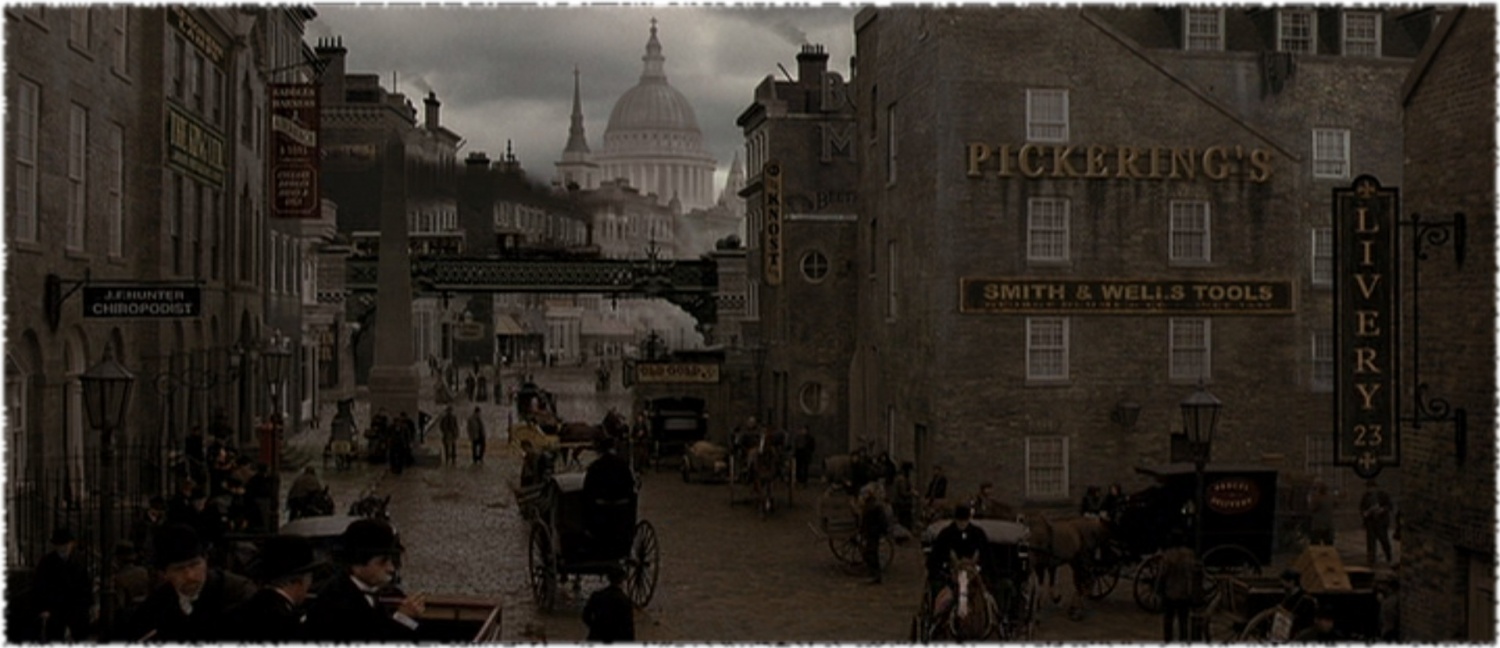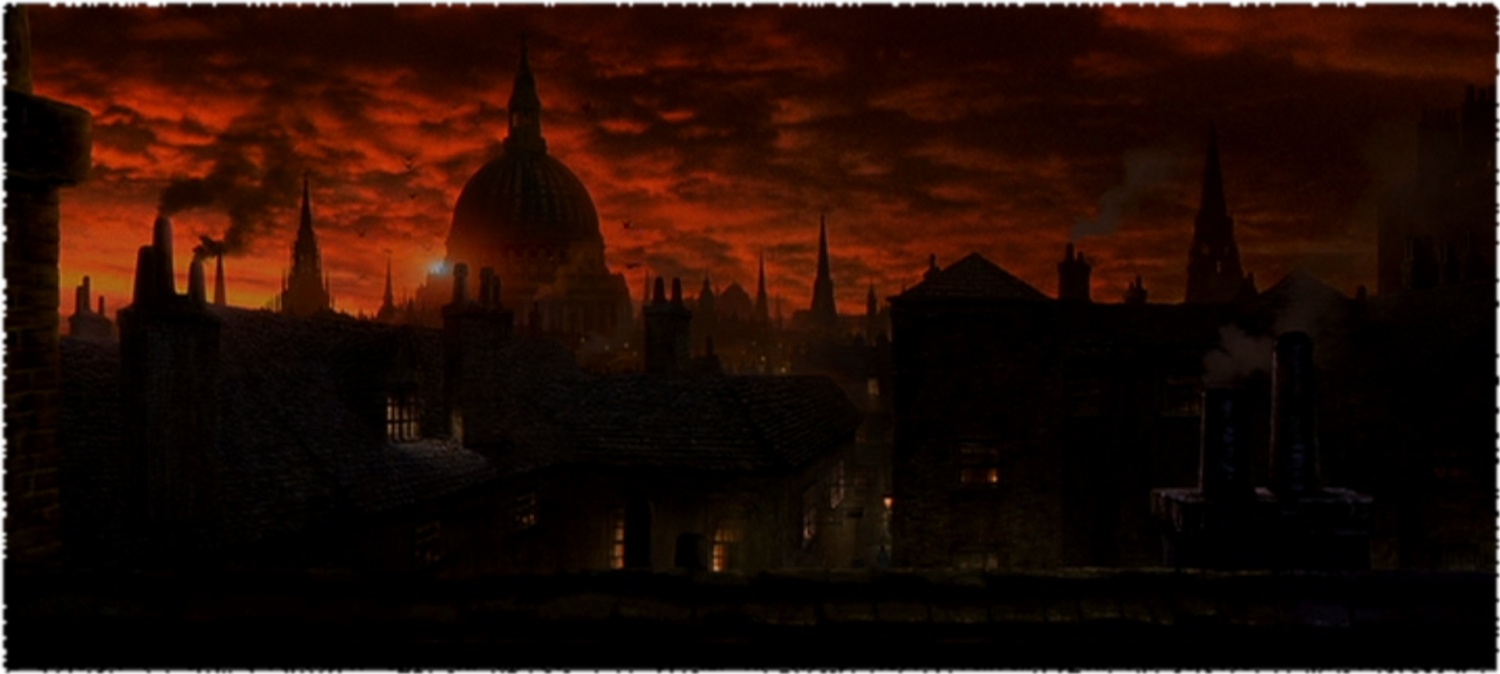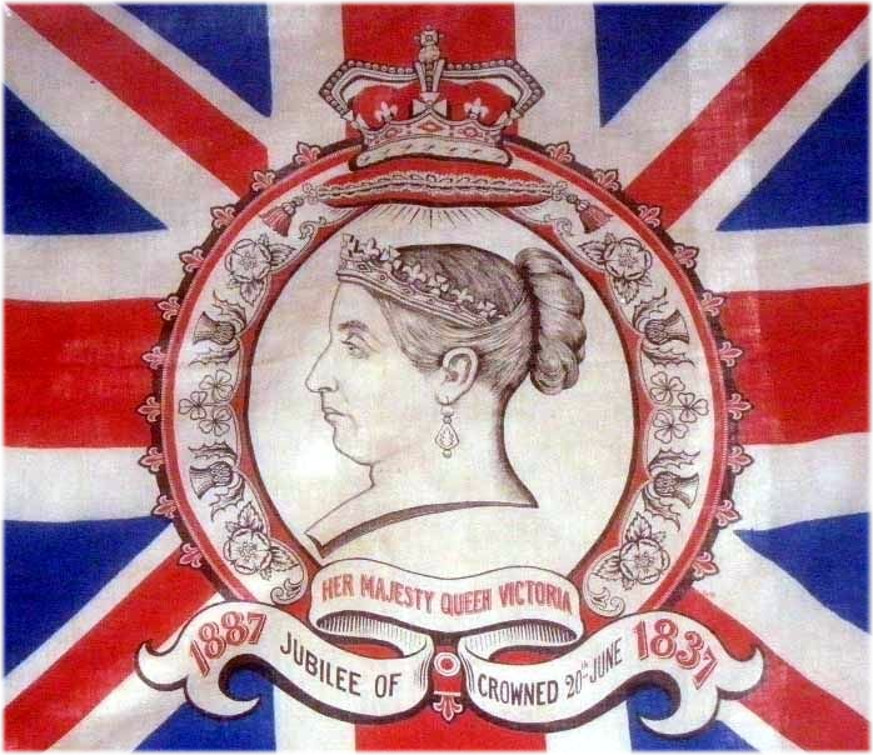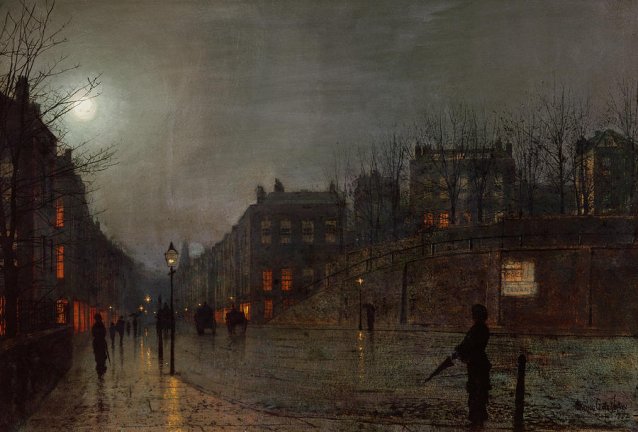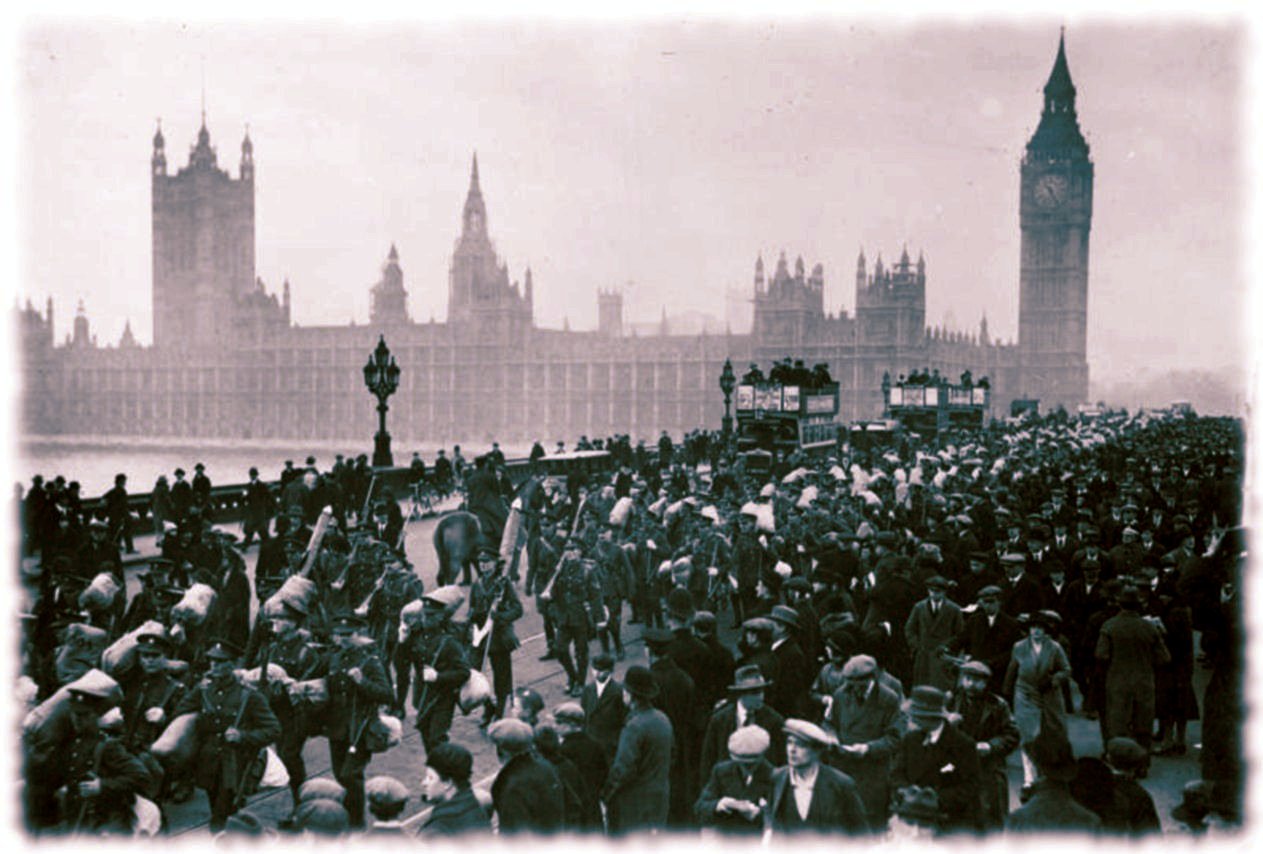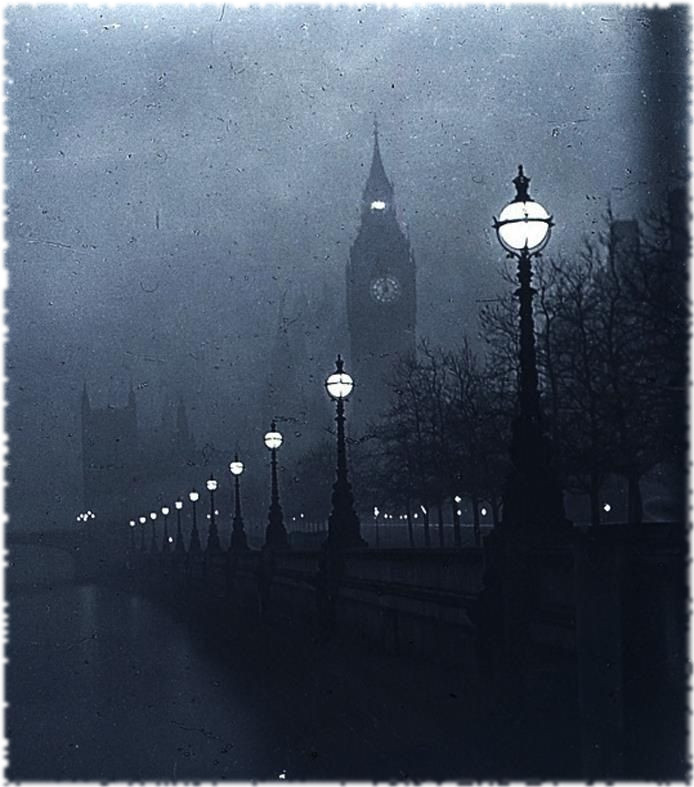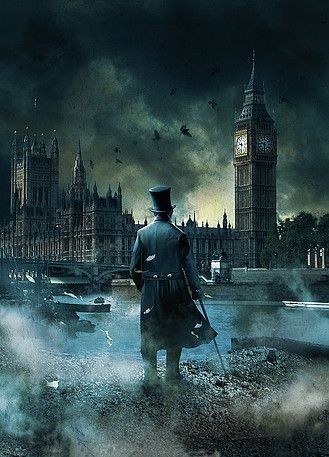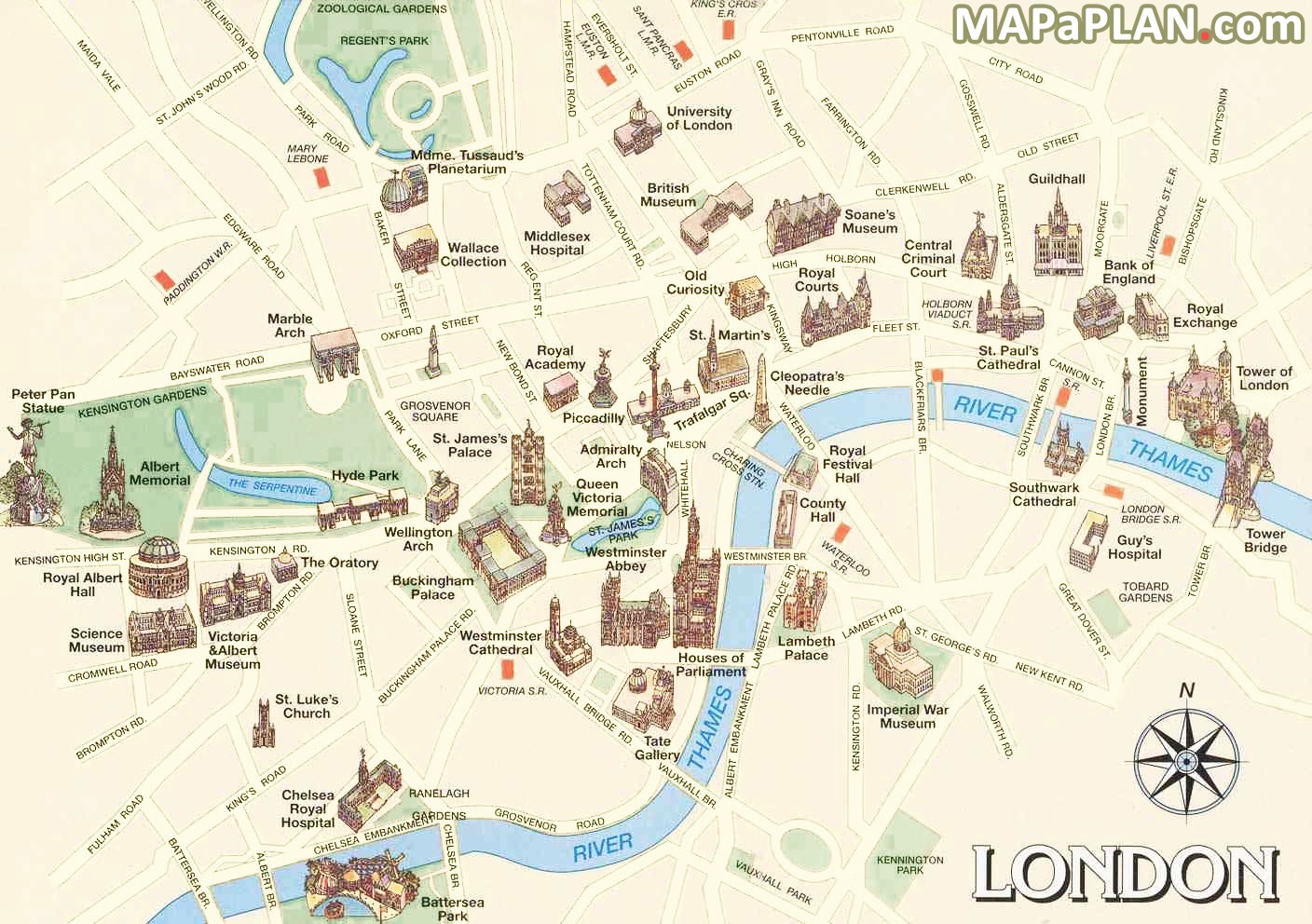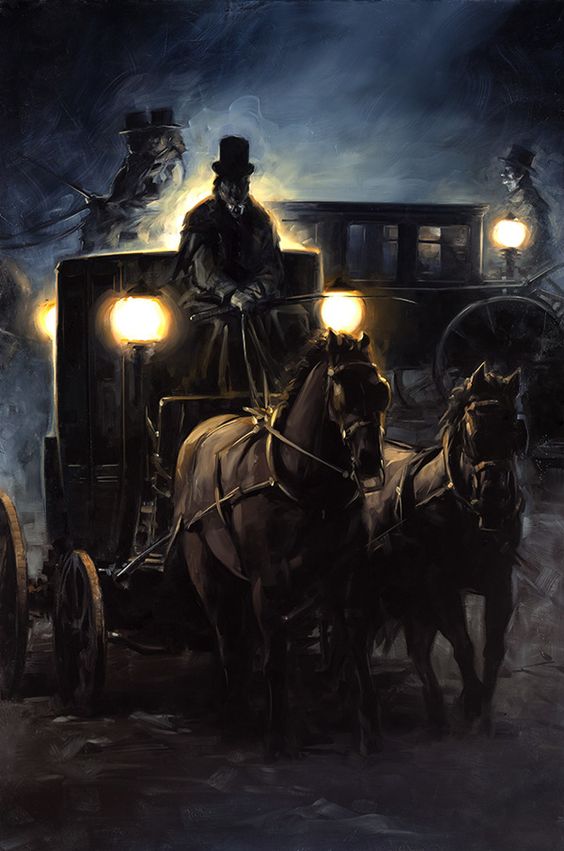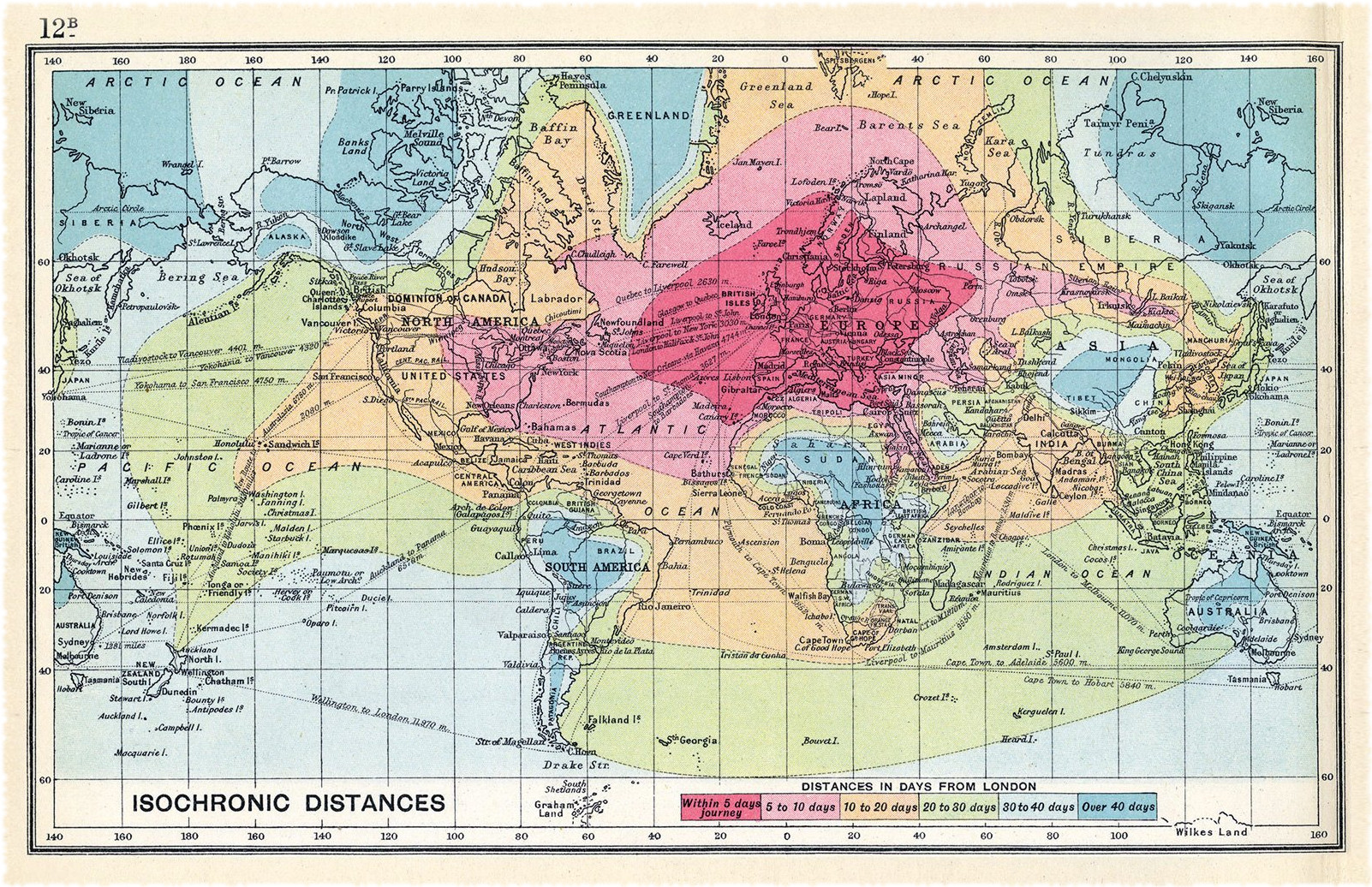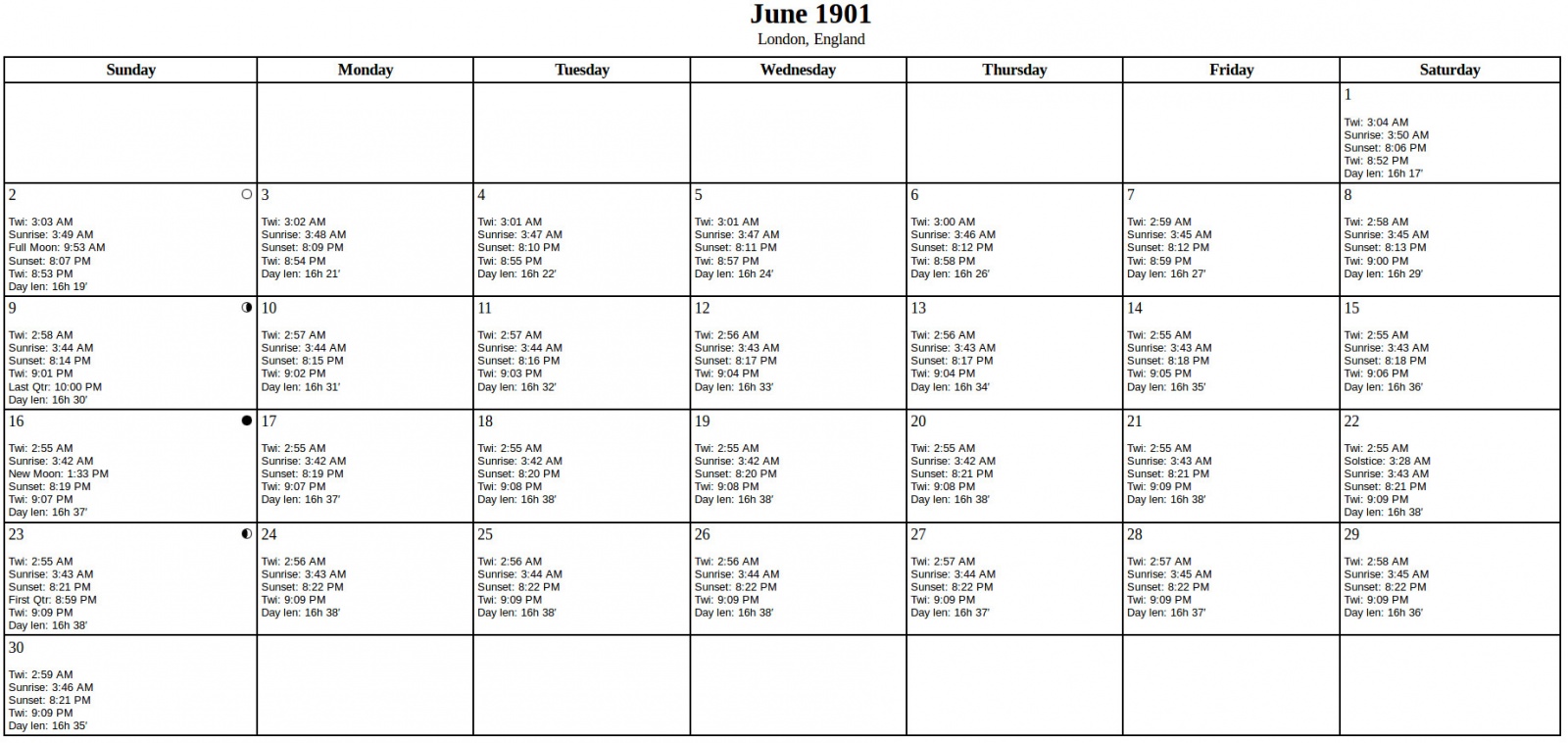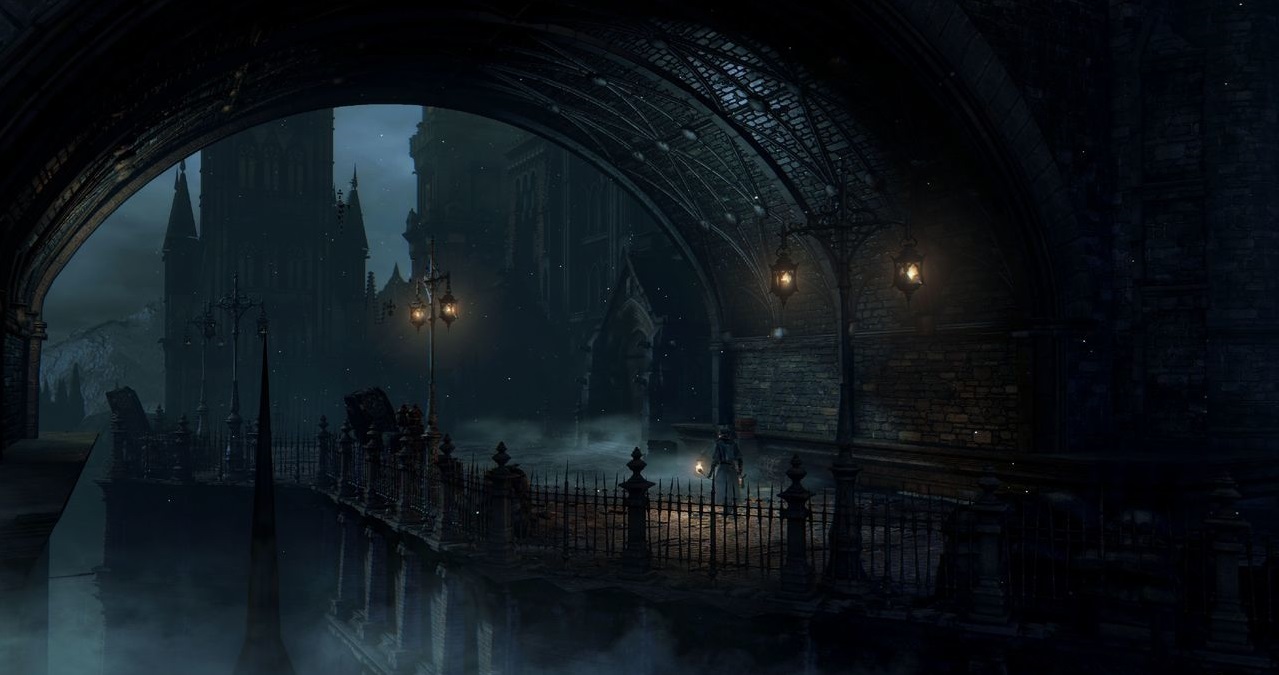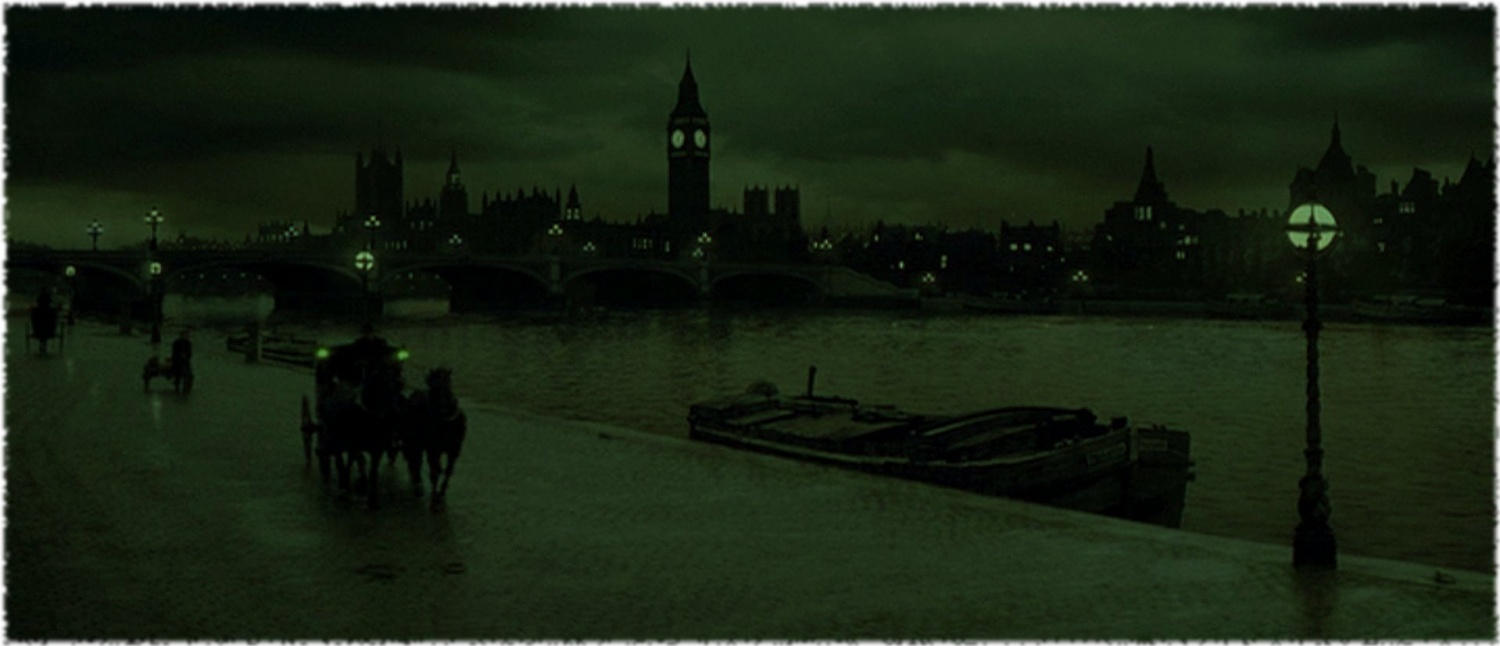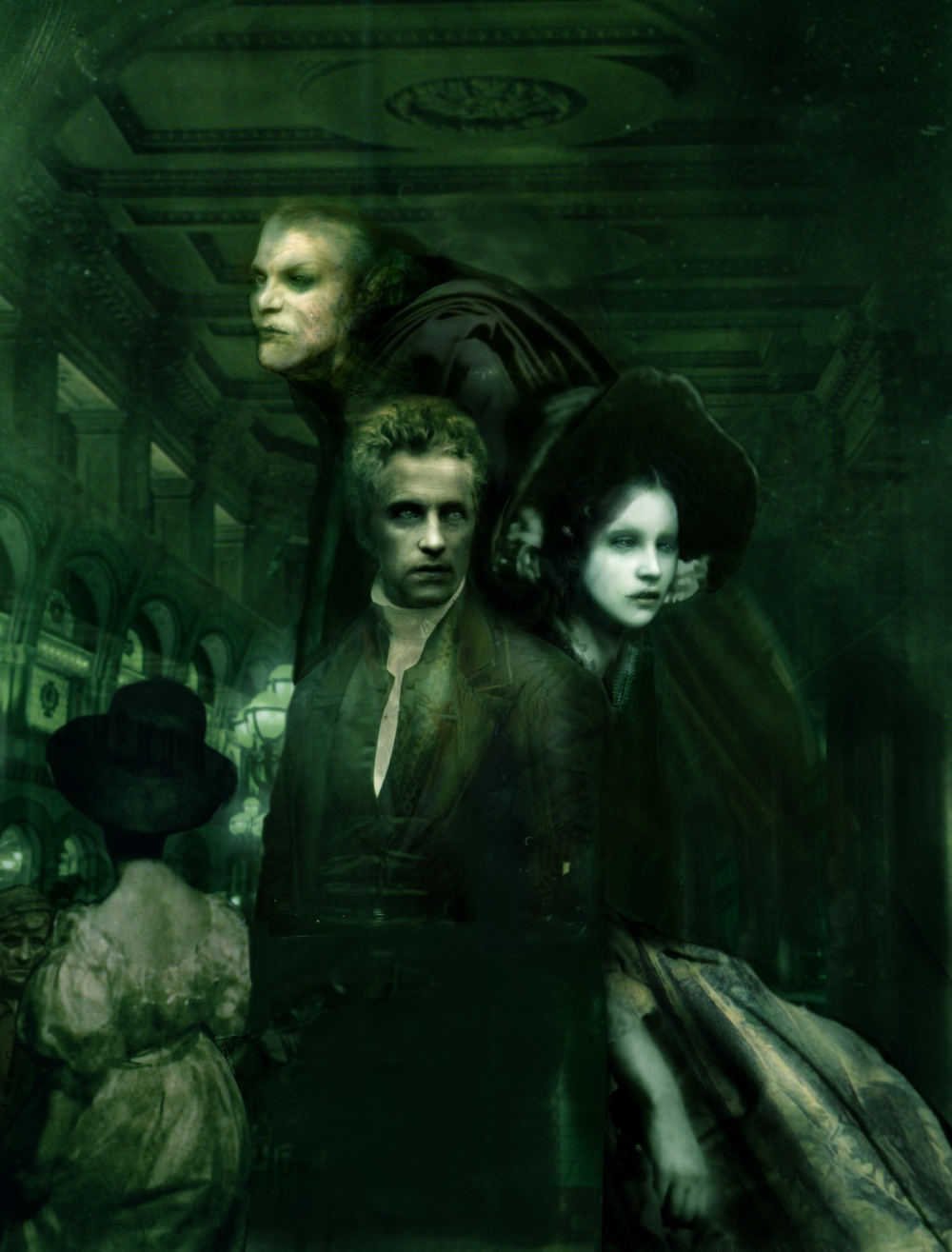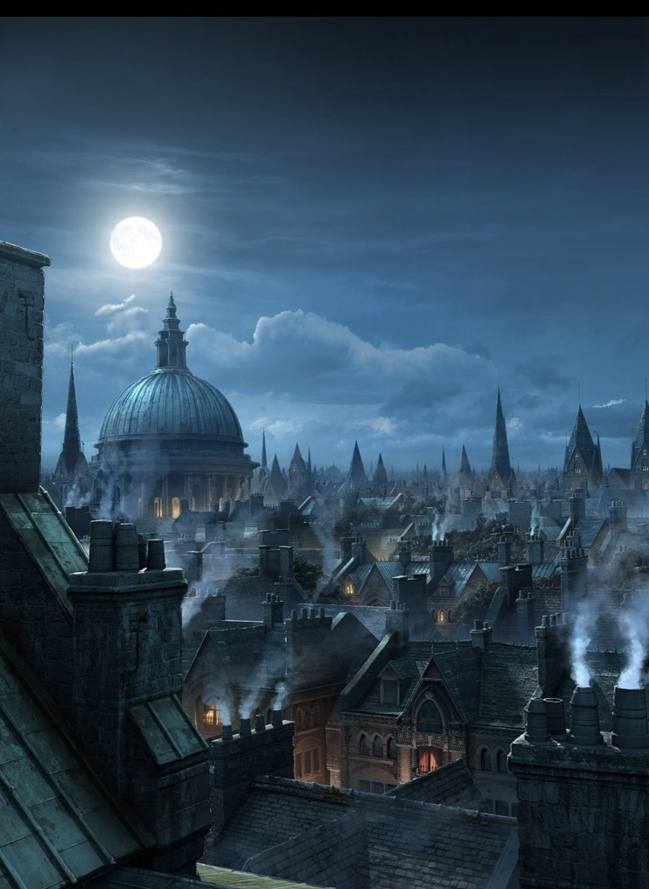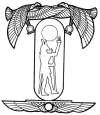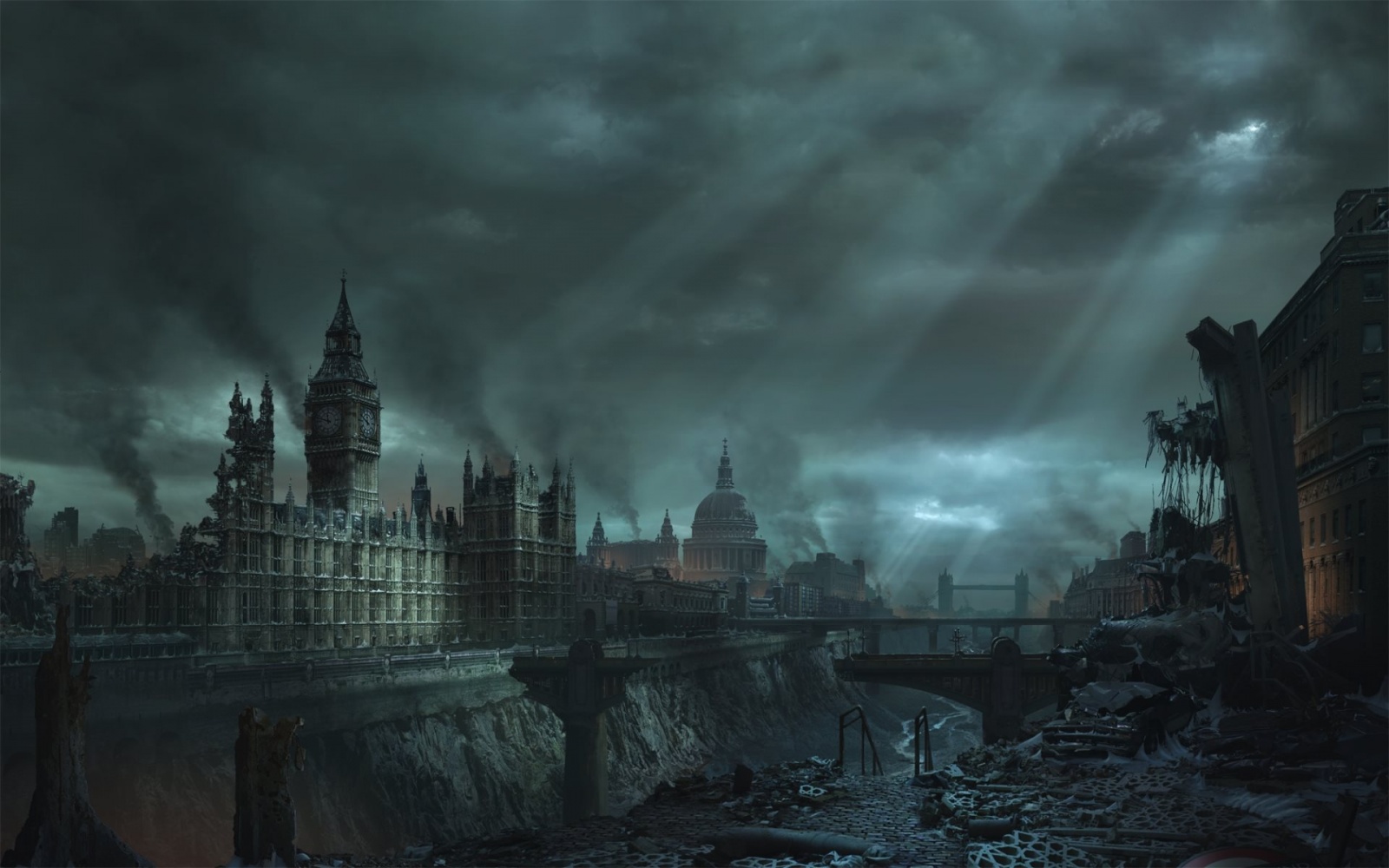Difference between revisions of "London - Pax Britannica"
(→Low End Clubs) |
(→The Were-Wolves of London Circa 1900) |
||
| (305 intermediate revisions by 2 users not shown) | |||
| Line 1: | Line 1: | ||
| − | ;[[World of Darkness: 1900]] ~&~ [[London]] ~&~ [[Past Imperfect]] ~&~ [[ | + | ;[[World of Darkness: 1900]] ~&~ [[London]] ~&~ [[Past Imperfect]] ~&~ [[Caer Ludein]] |
[[File:Flag of the United Kingdom.svg.png|800px]] | [[File:Flag of the United Kingdom.svg.png|800px]] | ||
<br> | <br> | ||
<br> | <br> | ||
== Quote == | == Quote == | ||
| − | + | '''<q>You find no man, at all intellectual, who is willing to leave London. No, Sir, when a man is tired of London, he is tired of life; for there is in London all that life can afford.</q>''' -- Samuel Johnson, 1777 | |
<br> | <br> | ||
<br> | <br> | ||
| Line 55: | Line 55: | ||
---- | ---- | ||
== '''Appearance''' == | == '''Appearance''' == | ||
| − | [[]] | + | [[File:1888 London by Day.jpg|1500px]] |
<br> | <br> | ||
<br> | <br> | ||
| Line 64: | Line 64: | ||
== '''Boroughs of London''' == | == '''Boroughs of London''' == | ||
===Local government=== | ===Local government=== | ||
| − | In 1900, eleven years after its foundation, the London Government Act divided the County of London into 28 | + | In 1900, eleven years after its foundation, the London Government Act divided the County of London into 28 metropolitan boroughs. These replaced the ancient parish [[vestry|vestries]] and district boards as the second tier of local government. |
County of London boroughs numbered in the information box on the right side: | County of London boroughs numbered in the information box on the right side: | ||
| Line 77: | Line 77: | ||
|- | |- | ||
|[[City of London]] † | |[[City of London]] † | ||
| − | | | + | | |
|1 | |1 | ||
|- | |- | ||
|[[Metropolitan Borough of Battersea|Battersea]] | |[[Metropolitan Borough of Battersea|Battersea]] | ||
| − | | | + | | |
|28 | |28 | ||
|- | |- | ||
|[[Metropolitan Borough of Bermondsey|Bermondsey]] | |[[Metropolitan Borough of Bermondsey|Bermondsey]] | ||
| − | | | + | | |
|8 | |8 | ||
|- | |- | ||
|[[Metropolitan Borough of Bethnal Green|Bethnal Green]] | |[[Metropolitan Borough of Bethnal Green|Bethnal Green]] | ||
| − | | | + | | |
|6 | |6 | ||
|- | |- | ||
|[[Metropolitan Borough of Camberwell|Camberwell]] | |[[Metropolitan Borough of Camberwell|Camberwell]] | ||
| − | | | + | | |
|10 | |10 | ||
|- | |- | ||
|[[Metropolitan Borough of Chelsea|Chelsea]] | |[[Metropolitan Borough of Chelsea|Chelsea]] | ||
| − | | | + | | |
|29 | |29 | ||
|- | |- | ||
|[[Metropolitan Borough of Deptford|Deptford]] | |[[Metropolitan Borough of Deptford|Deptford]] | ||
| − | | | + | | |
|11 | |11 | ||
|- | |- | ||
|[[Metropolitan Borough of Finsbury|Finsbury]] | |[[Metropolitan Borough of Finsbury|Finsbury]] | ||
| − | | | + | | |
|4 | |4 | ||
|- | |- | ||
|[[Metropolitan Borough of Fulham|Fulham]] | |[[Metropolitan Borough of Fulham|Fulham]] | ||
| − | | | + | | |
|25 | |25 | ||
|- | |- | ||
|[[Metropolitan Borough of Greenwich|Greenwich]] | |[[Metropolitan Borough of Greenwich|Greenwich]] | ||
| − | | | + | | |
|14 | |14 | ||
|- | |- | ||
|[[Metropolitan Borough of Hackney|Hackney]] | |[[Metropolitan Borough of Hackney|Hackney]] | ||
| − | | | + | | |
|16 | |16 | ||
|- | |- | ||
|[[Metropolitan Borough of Hammersmith|Hammersmith]] | |[[Metropolitan Borough of Hammersmith|Hammersmith]] | ||
| − | | | + | | |
|24 | |24 | ||
|- | |- | ||
|[[Metropolitan Borough of Hampstead|Hampstead]] | |[[Metropolitan Borough of Hampstead|Hampstead]] | ||
| − | | | + | | |
|20 | |20 | ||
|- | |- | ||
|[[Metropolitan Borough of Holborn|Holborn]] | |[[Metropolitan Borough of Holborn|Holborn]] | ||
| − | | | + | | |
|3 | |3 | ||
|- | |- | ||
|[[Metropolitan Borough of Islington|Islington]] | |[[Metropolitan Borough of Islington|Islington]] | ||
| − | | | + | | |
|18 | |18 | ||
|- | |- | ||
|[[Metropolitan Borough of Kensington|Kensington]] ([[Royal Borough]]) | |[[Metropolitan Borough of Kensington|Kensington]] ([[Royal Borough]]) | ||
| − | | | + | | |
|23 | |23 | ||
|- | |- | ||
|[[Metropolitan Borough of Lambeth|Lambeth]] | |[[Metropolitan Borough of Lambeth|Lambeth]] | ||
| − | | | + | | |
|27 | |27 | ||
|- | |- | ||
|[[Metropolitan Borough of Lewisham|Lewisham]] | |[[Metropolitan Borough of Lewisham|Lewisham]] | ||
| − | | | + | | |
|12 | |12 | ||
|- | |- | ||
|[[Metropolitan Borough of Paddington|Paddington]] | |[[Metropolitan Borough of Paddington|Paddington]] | ||
| − | | | + | | |
|22 | |22 | ||
|- | |- | ||
|[[Metropolitan Borough of Poplar|Poplar]] | |[[Metropolitan Borough of Poplar|Poplar]] | ||
| − | | | + | | |
|15 | |15 | ||
|- | |- | ||
|[[Metropolitan Borough of Shoreditch|Shoreditch]] | |[[Metropolitan Borough of Shoreditch|Shoreditch]] | ||
| − | | | + | | |
|5 | |5 | ||
|- | |- | ||
|[[Metropolitan Borough of Southwark|Southwark]] | |[[Metropolitan Borough of Southwark|Southwark]] | ||
| − | | | + | | |
|9 | |9 | ||
|- | |- | ||
|[[Metropolitan Borough of St Marylebone|St Marylebone]] | |[[Metropolitan Borough of St Marylebone|St Marylebone]] | ||
| − | | | + | | |
|21 | |21 | ||
|- | |- | ||
|[[Metropolitan Borough of St Pancras|St Pancras]] | |[[Metropolitan Borough of St Pancras|St Pancras]] | ||
| − | | | + | | |
|19 | |19 | ||
|- | |- | ||
|[[Metropolitan Borough of Stepney|Stepney]] | |[[Metropolitan Borough of Stepney|Stepney]] | ||
| − | | | + | | |
|7 | |7 | ||
|- | |- | ||
|[[Metropolitan Borough of Stoke Newington|Stoke Newington]] | |[[Metropolitan Borough of Stoke Newington|Stoke Newington]] | ||
| − | | | + | | |
|17 | |17 | ||
|- | |- | ||
|[[Metropolitan Borough of Wandsworth|Wandsworth]] | |[[Metropolitan Borough of Wandsworth|Wandsworth]] | ||
| − | | | + | | |
|26 | |26 | ||
|- | |- | ||
|[[Metropolitan Borough of Westminster|Westminster]] (City) | |[[Metropolitan Borough of Westminster|Westminster]] (City) | ||
| − | | | + | | |
|2 | |2 | ||
|- | |- | ||
|[[Metropolitan Borough of Woolwich|Woolwich]] | |[[Metropolitan Borough of Woolwich|Woolwich]] | ||
| − | | | + | | |
|13 | |13 | ||
|} | |} | ||
† Not a metropolitan borough. | † Not a metropolitan borough. | ||
| − | + | === Outer London === | |
| + | :[[Ealing]] | ||
| + | :[[Hounslow]] | ||
| + | :[[Richmond upon Thames]] | ||
| + | :[[Kingston upon Thames]] | ||
| + | :[[Merton]] | ||
| + | :[[Sutton]] | ||
| + | :[[Croydon]] | ||
| + | :[[Bromley]] | ||
| + | :[[Lewisham]] | ||
| + | :[[Greenwich]] | ||
| + | :[[Bexley]] | ||
| + | :[[Havering]] | ||
| + | :[[Barking and Dagenham]] | ||
| + | :[[Redbridge]] | ||
| + | :[[Newham]] | ||
| + | :[[Waltham Forest]] - The domain of the Tzimisce Anastasius | ||
| + | :[[Haringey]] | ||
| + | :[[Enfield]] | ||
| + | :[[Barnet]] | ||
| + | :[[Harrow]] | ||
| + | :[[Hillingdon]] | ||
| + | |||
| + | === Near London === | ||
| + | :[[Basingstoke]] | ||
:[[Mentmore Village]] | :[[Mentmore Village]] | ||
:[[Radlett Town]] | :[[Radlett Town]] | ||
| + | :[[Wanstead]] | ||
| + | ::[[Wanstead Park]] | ||
| + | :::[[Wanstead House]] | ||
=== Animated 19th Century Map === | === Animated 19th Century Map === | ||
| Line 205: | Line 232: | ||
== '''Climate''' == | == '''Climate''' == | ||
| + | [[File:London weather.jpg]] | ||
| + | <br> | ||
| + | <br> | ||
---- | ---- | ||
<br> | <br> | ||
---- | ---- | ||
| + | |||
== '''Economy''' == | == '''Economy''' == | ||
| + | [[File:London 1888.jpg|1500px]] | ||
| + | <br> | ||
| + | <br> | ||
---- | ---- | ||
<br> | <br> | ||
---- | ---- | ||
| + | |||
== '''History''' == | == '''History''' == | ||
| + | [[File:Great Fire London.jpg|1200px]] | ||
| + | <br> | ||
| + | <br> | ||
'''<u>Historical Key</u>:''' Plain "Black" text denotes mortal events, while text in <span style="color:#800000;">"Maroon"</Span> denote Cainite historical events and <span style="color:#696969;">"Gray"</span> text represent events pertaining to Wraiths and their Grand Necropolis of London.<br> | '''<u>Historical Key</u>:''' Plain "Black" text denotes mortal events, while text in <span style="color:#800000;">"Maroon"</Span> denote Cainite historical events and <span style="color:#696969;">"Gray"</span> text represent events pertaining to Wraiths and their Grand Necropolis of London.<br> | ||
| − | |||
| − | |||
| − | |||
==== '''A Chronology of London - With Reference to Events in Britain''' ==== | ==== '''A Chronology of London - With Reference to Events in Britain''' ==== | ||
| Line 231: | Line 266: | ||
==== '''''19th Century London''''' ==== | ==== '''''19th Century London''''' ==== | ||
| + | [[File:1887 Queen Victoria Jubilee flag.jpg]] | ||
| + | <br> | ||
| + | <br> | ||
[[File:London.jpeg]] | [[File:London.jpeg]] | ||
---- | ---- | ||
<br> | <br> | ||
---- | ---- | ||
| + | |||
==== '''''A Century Yet to Be Born - Dawn of the 20th''''' ==== | ==== '''''A Century Yet to Be Born - Dawn of the 20th''''' ==== | ||
| + | [[File:London 1930.jpg]] | ||
| + | <br> | ||
| + | <br> | ||
---- | ---- | ||
<br> | <br> | ||
---- | ---- | ||
| + | |||
== '''Location''' == | == '''Location''' == | ||
---- | ---- | ||
| Line 244: | Line 287: | ||
---- | ---- | ||
== '''Population''' == | == '''Population''' == | ||
| + | * -- City (3,094,391) - 1861 Census | ||
| + | * -- City (5,137,908) - 1888 ''estimated'' | ||
| + | |||
| + | London was the world's largest city from c.1831 to 1925, with a population density of 325 people per hectare. London's overcrowded conditions led to cholera epidemics, claiming 14,000 lives in 1848, and 6,000 in 1866. Rising traffic congestion led to the creation of the world's first local urban rail network. The Metropolitan Board of Works oversaw infrastructure expansion in the capital and some of the surrounding counties; it was abolished in 1889 when the London County Council was created out of those areas of the counties surrounding the capital. | ||
---- | ---- | ||
<br> | <br> | ||
---- | ---- | ||
| + | |||
== '''Arenas''' == | == '''Arenas''' == | ||
---- | ---- | ||
| Line 252: | Line 300: | ||
---- | ---- | ||
== '''Attractions''' == | == '''Attractions''' == | ||
| − | + | [[File:Elizabeth Tower & Big Ben.jpg]] | |
| + | <br> | ||
| + | <br> | ||
| + | :* [[Great Clock of Westminster]] | ||
| + | ---- | ||
| + | <br> | ||
| + | ---- | ||
| + | |||
| + | == '''Auction Houses''' == | ||
| + | ''Auctions have long been compared to a theatrical event for their inherent glamour, suspense, and entertainment value. Despite the rise of international commerce, when looking to purchase luxury goods, exclusive artworks, and one-of-a-kind pieces, the global glitterati still flock to one of the world’s top five luxury auction houses found in London.'' | ||
| + | |||
| + | * ~ '''[[Sotheby’s]]''' -- Sotheby’s has been selling luxury goods at auction in London since 1744. Sotheby’s beats out Christie’s for the title of oldest and largest fine art auction house in the world. Sotheby’s is famous for the sale of rare books and collections to such historic men as Napoléon Bonaparte, John Wilkes, Benjamin Heywood Bright and the Dukes of Devonshire and of Buckingham. Of late the auction house extended its activities to auctioning prints, medals, and rare coins. | ||
| + | |||
| + | * ~ '''[[Christie’s]]''' -- Founded in 1766 by Scottish born auctioneer James Christie, this auction house is now one of the world’s largest and most famous. At a Christie’s auction buyers will find everything in the realm of fine and decorative arts including photography, jewellery, collectibles, and more. Christie’s is known for high profile sales such as the auctions of country estates, the personal libraries of prominent literati, and one of a kind jewellery. With its long history and wide-reaching presence, the Christie’s brand carries a reputation for luxury excellence around the Empire. | ||
| + | |||
| + | * ~ '''[[Bonham’s]]''' -- Founded in London in 1793, Bonham’s has grown a reputation over the past century that begins to rival Christie’s and Sotheby’s. Bonham’s is particularly strong in the sale of Asian art, but buyers will also find lots for antiquities, watches and clocks, European ceramics, and more. Bonham’s has a reputation in London for excellence in the sale of jewelry, diamonds, and colored stones. | ||
| + | |||
| + | * ~ '''[[Phillips]]''' -- Phillips was founded in 1796 by Harry Phillips, a former senior employee of James Christie. Harry Phillips achieved considerable success for his auction house during his lifetime, holding sales for major contemporary figures such as Beau Brummel and Napoleon Bonaparte. | ||
| + | |||
| + | * ~ '''[[Wembley's]]''' -- Wembley's Auction House is an art auction house located in the small village of Wembly Green in Middlesex. It is a well regarded and renowned house for trading prominent art pieces. Est.1848 | ||
---- | ---- | ||
<br> | <br> | ||
| Line 258: | Line 325: | ||
=='''Banks/Exchanges'''== | =='''Banks/Exchanges'''== | ||
| − | + | * ~ [[Rhinefelds Exchange]] | |
| − | * | ||
== '''Bridges''' == | == '''Bridges''' == | ||
| + | * -- [[Blackfriars Bridge]] | ||
* -- [[London Bridge]] | * -- [[London Bridge]] | ||
* -- [[Tower Bridge]] | * -- [[Tower Bridge]] | ||
| Line 297: | Line 364: | ||
* -- '''[[Bunhill Fields Burial Ground]]''' -- Est.1665 | * -- '''[[Bunhill Fields Burial Ground]]''' -- Est.1665 | ||
* -- '''[[Tottenham Cemetary]]''' | * -- '''[[Tottenham Cemetary]]''' | ||
| + | * -- '''[[Margravine (Hammersmith) Cemetary]]''' | ||
| + | |||
---- | ---- | ||
<br> | <br> | ||
---- | ---- | ||
| + | |||
== '''Churches''' == | == '''Churches''' == | ||
* -- [[All Hallows-by-the-Tower]] | * -- [[All Hallows-by-the-Tower]] | ||
| Line 309: | Line 379: | ||
== '''Clubs''' == | == '''Clubs''' == | ||
| + | * -- [[Army and Navy Club]] | ||
* -- [[Brooks's]] | * -- [[Brooks's]] | ||
* -- [[Carfax Abbey]] <span style="color:#800000;">-- Goth Club & Anarch Hangout. | * -- [[Carfax Abbey]] <span style="color:#800000;">-- Goth Club & Anarch Hangout. | ||
| + | * -- [[Etheric Explorers Club]] | ||
* -- [[Heathens Retreat]] -- <span style="color:#800000;"> Goth/Hollower club known for it's mystic atmosphere. | * -- [[Heathens Retreat]] -- <span style="color:#800000;"> Goth/Hollower club known for it's mystic atmosphere. | ||
| + | * -- [[Merritt House]] | ||
| + | * -- [[Oriental Club]] | ||
* -- [[The Carlton]] | * -- [[The Carlton]] | ||
* -- [[The Marlborough]] | * -- [[The Marlborough]] | ||
| − | * -- [[ | + | * -- [[St James's Club]] |
* -- [[The Reform Club]] | * -- [[The Reform Club]] | ||
* -- [[The Taurus Club]] | * -- [[The Taurus Club]] | ||
* -- [[Whites]] | * -- [[Whites]] | ||
* -- [[X-Club]] | * -- [[X-Club]] | ||
| + | |||
| + | https://en.wikipedia.org/wiki/List_of_gentlemen%27s_clubs_in_London | ||
---- | ---- | ||
<br> | <br> | ||
---- | ---- | ||
=== '''Casinos''' === | === '''Casinos''' === | ||
| + | Technically, gambling in London and Great Britain is illegal save for betting on horse-racing. But the upper-crust continue to play games of chance like cards, dice, roulette and a host of others without much fear of repercussion. The lower classes were not so lucky and had to look for games of chance in unsavory places and if caught could face fines or imprisonment. While London in 1900 has no casinos, betting in private clubs is an open secret, although not every club allows gambling - most do - unofficially. '''See:''' Nightlife (below) | ||
---- | ---- | ||
<br> | <br> | ||
---- | ---- | ||
| + | |||
== '''Crime''' == | == '''Crime''' == | ||
=== Individual Criminals === | === Individual Criminals === | ||
| − | * -- [[Jack the Ripper | + | * -- [[Aurther Wayborn]] |
| + | * -- Jack the Ripper | ||
---- | ---- | ||
<br> | <br> | ||
---- | ---- | ||
| + | |||
=== Opium Dens === | === Opium Dens === | ||
Victorian London's reputation as a center of opium smoking is based on the belief of literary fiction over historical fact. The London press, along with popular British authors of the day, were fond of portraying London's Limehouse district as an opium-drenched pit of danger and mystery. In fact, London's Chinese population never exceeded the low hundreds, in large contrast to the tens of thousands of Chinese who settled in North American Chinatowns. In the mid-1880s, Chinatowns started to form in London and Liverpool with grocery stores, eating houses, meeting places and, in the East End, Chinese street names. In 1891, the Census recorded 582 Chinese-born residents in Britain, though this dropped to 387 in 1896. 80% were single males between 20 and 35, the majority being seamen. Companies began to export opium from India to China, selling the drug to raise the money to buy shipments of tea. This was against the law and angered China's authorities. In 1839, war broke out between Britain and China over the opium trade. Britain defeated China and under the terms of the Treaty of Nanking in 1842, Hong Kong became a British colony. In 1857, the Second Opium War resulted in the unequal Treaties of Tianjin which included a clause allowing Britain and France to recruit Chinese to the British Colonies, North America, South America, and Australia as cheap labor. However, Britain did not recruit as many workers as North America, where the Chinese were employed on the construction of the Transcontinental Railroad, and where many Chinese immigrated in search of fortune during the gold rush, thus the Chinese communities were much smaller in Britain.The Chinese immigrants to London often arrived in the East London ports by boat, such as the Blue Funnel Line. Most of them were seamen, and many would have settled in only a few select streets. When jobs on the docks and on boats dried up, many Chinese turned to other businesses, such as the restaurants or laundries. | Victorian London's reputation as a center of opium smoking is based on the belief of literary fiction over historical fact. The London press, along with popular British authors of the day, were fond of portraying London's Limehouse district as an opium-drenched pit of danger and mystery. In fact, London's Chinese population never exceeded the low hundreds, in large contrast to the tens of thousands of Chinese who settled in North American Chinatowns. In the mid-1880s, Chinatowns started to form in London and Liverpool with grocery stores, eating houses, meeting places and, in the East End, Chinese street names. In 1891, the Census recorded 582 Chinese-born residents in Britain, though this dropped to 387 in 1896. 80% were single males between 20 and 35, the majority being seamen. Companies began to export opium from India to China, selling the drug to raise the money to buy shipments of tea. This was against the law and angered China's authorities. In 1839, war broke out between Britain and China over the opium trade. Britain defeated China and under the terms of the Treaty of Nanking in 1842, Hong Kong became a British colony. In 1857, the Second Opium War resulted in the unequal Treaties of Tianjin which included a clause allowing Britain and France to recruit Chinese to the British Colonies, North America, South America, and Australia as cheap labor. However, Britain did not recruit as many workers as North America, where the Chinese were employed on the construction of the Transcontinental Railroad, and where many Chinese immigrated in search of fortune during the gold rush, thus the Chinese communities were much smaller in Britain.The Chinese immigrants to London often arrived in the East London ports by boat, such as the Blue Funnel Line. Most of them were seamen, and many would have settled in only a few select streets. When jobs on the docks and on boats dried up, many Chinese turned to other businesses, such as the restaurants or laundries. | ||
| Line 340: | Line 420: | ||
In 1868, the Pharmacy Act recognized dangerous drugs and limited their sale to registered chemists and pharmacists, but until the end of the nineteenth century few doctors and scientists warned about the dangers of drug addiction. When the small number of opium dens gradually declined in London, following crackdowns from the authorities, individuals like Ah Sing were forced to move from their properties, and had to find alternative ways of making a living. In his latter days, it was said that he continued to smoke, despite finding religion. He did eventually manage to give up opium smoking, though only days before he died around 1890, aged 64. He is now buried in Bow Cemetery. | In 1868, the Pharmacy Act recognized dangerous drugs and limited their sale to registered chemists and pharmacists, but until the end of the nineteenth century few doctors and scientists warned about the dangers of drug addiction. When the small number of opium dens gradually declined in London, following crackdowns from the authorities, individuals like Ah Sing were forced to move from their properties, and had to find alternative ways of making a living. In his latter days, it was said that he continued to smoke, despite finding religion. He did eventually manage to give up opium smoking, though only days before he died around 1890, aged 64. He is now buried in Bow Cemetery. | ||
| + | |||
| + | |||
| + | :'''~''' [[Ah Sing]] ~ Owner of an Opium Den | ||
---- | ---- | ||
<br> | <br> | ||
---- | ---- | ||
| + | |||
=== Organized Crime === | === Organized Crime === | ||
London was the first city noted to have a major problem with criminal gangs, followed thereafter by American cities such as New York City, Chicago and Los Angeles. A number of street gangs were present in London during the 20th century, many in the East End, often referred to as Mobs, including The Yiddishers, Hoxton Mob, Watney Streeters, Aldgate Mob, Whitechapel Mob, Bethnal Green Mob and the organized Italian Mob headed by Charles Sabini. The history of these gangs is well documented in "London's Underworld: Three centuries of vice and crime". | London was the first city noted to have a major problem with criminal gangs, followed thereafter by American cities such as New York City, Chicago and Los Angeles. A number of street gangs were present in London during the 20th century, many in the East End, often referred to as Mobs, including The Yiddishers, Hoxton Mob, Watney Streeters, Aldgate Mob, Whitechapel Mob, Bethnal Green Mob and the organized Italian Mob headed by Charles Sabini. The history of these gangs is well documented in "London's Underworld: Three centuries of vice and crime". | ||
| Line 353: | Line 437: | ||
!Territory | !Territory | ||
|- | |- | ||
| − | |The Marylebone Gang | + | |[[The Marylebone Gang]] |
|Lisson Grove. | |Lisson Grove. | ||
|- | |- | ||
| − | |The Fitzroy Place Gang | + | |[[The Fitzroy Place Gang]] |
|Regent's Park. | |Regent's Park. | ||
|- | |- | ||
| − | |The Monkey Parade Gang | + | |[[The Monkey Parade Gang]] |
|Whitechapel. | |Whitechapel. | ||
|- | |- | ||
| − | |The Black Gang | + | |[[The Black Gang]] |
|Union Street, Borough. | |Union Street, Borough. | ||
|- | |- | ||
| − | |The New Cut Gang | + | |[[The New Cut Gang]] |
|The New Cut, Lambeth. | |The New Cut, Lambeth. | ||
|- | |- | ||
| − | |The Greengate Gang | + | |[[The Greengate Gang]] |
|City Road. | |City Road. | ||
|- | |- | ||
| − | |The "Prince Arthur" Gang | + | |[[The "Prince Arthur" Gang]] |
|Duke Street, Blackfriars. | |Duke Street, Blackfriars. | ||
|- | |- | ||
| − | |"The Gang of Roughs" | + | |[["The Gang of Roughs"]] |
|Norwood. | |Norwood. | ||
|- | |- | ||
| − | |The Jovial Thirty-Two | + | |[[The Jovial Thirty-Two]] |
|Upper Holloway. | |Upper Holloway. | ||
| + | |- | ||
| + | |[[Brixton Hall Boys]] | ||
| + | |Brixton Center | ||
| + | |- | ||
|} | |} | ||
| + | |||
| + | === Prostitution === | ||
| + | :~ [[Darcy Tobias]] ~ ''Prostitute'' -- Fed upon by Henry Stern | ||
---- | ---- | ||
<br> | <br> | ||
| Line 385: | Line 476: | ||
== '''Citizens of London''' == | == '''Citizens of London''' == | ||
| − | : ~ [[ | + | [[File:19th century london 1.jpg]] |
| − | : ~ [[ | + | <br> |
| − | : ~ [[Albert Edward of Saxe-Coburg and Gotha]] ~ Eldest Royal Prince and Heir to the Throne of Great Britain | + | <br> |
| − | : ~ [[ | + | === Alienists === |
| − | : ~ [[G. | + | :~ [[Dr.Pearce Hightower]] -- Attending physician at [[Bethlehem Royal Hospital]] |
| − | : ~ [[ | + | :~ [[Dr.Sands]] -- A visiting physician |
| − | : ~ [[]] ~ | + | |
| − | : ~ [[]] ~ | + | === Aristocracy === |
| − | : ~ [[]] ~ | + | :~ [[Alexandrina Victoria]] ~ '''Queen Victoria''' -- (24 May 1819 – 22 January 1901) |
| − | : ~ [[]] ~ | + | :~ [[Albert Edward of Saxe-Coburg and Gotha]] ~ Eldest Royal Prince and Heir to the Throne of Great Britain |
| − | : ~ [[]] ~ | + | :~ [[Adelynn Gloria Southers]] ~ Duchess |
| − | : ~ [[]] ~ | + | :~ [[Kenton Anton Southers]] ~ Duke (''deceased'') |
| − | : ~ [[]] ~ | + | :~ [[Gervase Boatwright]] ~ |
| − | : ~ [[]] ~ | + | |
| − | : ~ [[]] ~ | + | === Artists === |
| − | : ~ [[]] ~ | + | :~ [[Arthur Conan Doyle]] ~ Writer |
| − | : ~ [[]] ~ | + | :~ [[Charles Dickens]] -- Famous Author / Social Critic |
| − | : ~ [[]] ~ | + | :~ [[H.G. Wells]] ~ ''Father of Science Fiction'' |
| − | : ~ [[]] ~ | + | :~ [[J. M. Barrie]] ~ Author of Peter Pan |
| − | : ~ [[]] ~ | + | |
| + | ===Athletic Clubs=== | ||
| + | :~ [[Hurlingham Club]] | ||
| + | |||
| + | === Celebrities === | ||
| + | :~ [[Lord Byron]] | ||
| + | |||
| + | === Cults === | ||
| + | :~ [[Trógon tou Thanátou]] -- Death Cult | ||
| + | |||
| + | === Common Citizens === | ||
| + | :~ [[Petrus Raskopf]] -- ''Street Urchin'' -- | ||
| + | :~ [[Sunday Glass]] -- ''Matchstick Girl'' -- | ||
| + | :~ [[Keila Laurissa Lamar]] ~ | ||
| + | :~ [[Wilford Ayton]] -- ''Freelance Photographer'' -- | ||
| + | :~ [[Storm Moore]] -- ''Proprietor of the Club'' | ||
| + | :~ [[Helen Barkaresh]] -- ''Medium and author of ''Paranormal Science'' pamphlet | ||
| + | |||
| + | === Occultists === | ||
| + | :~ [[Aleister Crowley]] ~ Author, Ceremonial Magician, and Spy | ||
| + | |||
| + | === Philosophers === | ||
| + | :~ [[G. K. Chesterton]] ~ ''Prince of Paradox'' | ||
| + | |||
| + | ----------- | ||
| + | <br> | ||
| + | <br> | ||
| + | -------------- | ||
| + | |||
| + | ===Political Factions or Groups=== | ||
| + | * -- [[Fenians]] | ||
| + | |||
| + | === Reporters === | ||
| + | :~ [[Felicia Joandra Kellogg]] ~ Up and coming Reporter for the London Times | ||
| + | :~ [[Lucian Lamar]] -- ''Reporter London's Telltale Newspaper'' | ||
| + | |||
| + | |||
| + | |||
| + | |||
| + | :~ [[]] ~ | ||
| + | :~ [[]] ~ | ||
| + | :~ [[]] ~ | ||
| + | :~ [[]] ~ | ||
| + | :~ [[]] ~ | ||
| + | :~ [[]] ~ | ||
| + | :~ [[]] ~ | ||
| + | :~ [[]] ~ | ||
| + | :~ [[]] ~ | ||
| + | :~ [[]] ~ | ||
| + | :~ [[]] ~ | ||
---- | ---- | ||
<br> | <br> | ||
| Line 416: | Line 556: | ||
== '''Current Events''' == | == '''Current Events''' == | ||
=== ''Missives: In-Game'' === | === ''Missives: In-Game'' === | ||
| − | |||
| − | |||
| − | |||
:~ [[]] ~ | :~ [[]] ~ | ||
:~ [[]] ~ | :~ [[]] ~ | ||
| Line 430: | Line 567: | ||
<br> | <br> | ||
---- | ---- | ||
| + | == '''Education''' == | ||
| + | === Boarding Schools === | ||
| + | * [[Grey Coat Hospital ]] | ||
| + | * [[St Paul's School]] | ||
| + | * [[St Paul's School for Girls]] | ||
| − | == | + | === Universities === |
| − | + | * - [[London School of Medicine for Women]] | |
| + | * - [[University College London]] | ||
| + | ---- | ||
| + | <br> | ||
| + | ---- | ||
== '''Fashions''' == | == '''Fashions''' == | ||
| Line 440: | Line 586: | ||
<br> | <br> | ||
---- | ---- | ||
| − | |||
== '''Financial Institutions''' == | == '''Financial Institutions''' == | ||
* -- [[London's Royal Exchange]] | * -- [[London's Royal Exchange]] | ||
| Line 446: | Line 591: | ||
<br> | <br> | ||
---- | ---- | ||
| − | |||
== '''Galleries''' == | == '''Galleries''' == | ||
London is one of the most populous cities in Europe and indeed the world, thus, it comes as no surprise that it is a center of art and culture with literally hundred, perhaps thousands of art galleries. As beauty lies in the eyes of the beholder, and there are over 14 million such beholders in London, galleries and what passes for them literally litter the city. Depending on your taste, the quality and quantity of London's art scene varies from night to night, and only a true aficionado would be able to delve the glamorous showroom extravaganzas, glitzy parties showings and cold-water flat revivals to separate the dross from that sublime perfection called art. What follows is a select sampling of London's most famous and enduring art showrooms, some have survived for decades, others for centuries and some may be more immortal than the Kindred who frequent them. | London is one of the most populous cities in Europe and indeed the world, thus, it comes as no surprise that it is a center of art and culture with literally hundred, perhaps thousands of art galleries. As beauty lies in the eyes of the beholder, and there are over 14 million such beholders in London, galleries and what passes for them literally litter the city. Depending on your taste, the quality and quantity of London's art scene varies from night to night, and only a true aficionado would be able to delve the glamorous showroom extravaganzas, glitzy parties showings and cold-water flat revivals to separate the dross from that sublime perfection called art. What follows is a select sampling of London's most famous and enduring art showrooms, some have survived for decades, others for centuries and some may be more immortal than the Kindred who frequent them. | ||
| − | * | + | :* [[National Gallery]] -- Est.1824 |
| − | + | :* [[National Portrait Gallery]] -- Est.1856 | |
| − | + | :* [[Royal Academy of Arts]] -- Est. 1768 | |
| − | + | :* [[Brice Art Gallery]] -- | |
| − | |||
| − | |||
| − | * | ||
| − | |||
| − | |||
| − | |||
| − | * | ||
| − | |||
| − | |||
| − | |||
| − | |||
| − | : | ||
| − | |||
| − | * | ||
| − | |||
| − | |||
| − | |||
| − | |||
| − | |||
| − | |||
---- | ---- | ||
<br> | <br> | ||
---- | ---- | ||
| + | |||
== '''Government''' == | == '''Government''' == | ||
| − | * | + | :* [[Palace of Westminster]] |
| + | :* [[Somerset House]] | ||
---- | ---- | ||
<br> | <br> | ||
---- | ---- | ||
| + | |||
== '''Hospitals''' == | == '''Hospitals''' == | ||
Below are a list of 12 hospitals rated highly by a variety of sources. | Below are a list of 12 hospitals rated highly by a variety of sources. | ||
| + | * -- [[Bethlam Royal Hospital]] -- AKA: ''Bedlam'' -- An ancient sanitarium for the insane. | ||
| + | * -- [[Charing Cross Hospital]] -- | ||
* -- [[Great Ormond Street Hospital for Children]] -- | * -- [[Great Ormond Street Hospital for Children]] -- | ||
* -- [[London Bridge Hospital]] -- | * -- [[London Bridge Hospital]] -- | ||
| Line 494: | Line 623: | ||
* -- [[St George's Healthcare NHS Trust]] -- | * -- [[St George's Healthcare NHS Trust]] -- | ||
:NHS Trust incorporating St George's Hospital in Tooting, Bolingbroke Hospital in Battersea and the Wolfson Centre for neurorehabilitation in Wimbledon. | :NHS Trust incorporating St George's Hospital in Tooting, Bolingbroke Hospital in Battersea and the Wolfson Centre for neurorehabilitation in Wimbledon. | ||
| + | |||
| + | * -- [[St Bartholomew's Hospital]] | ||
* -- [[The Cromwell Hospital]] -- | * -- [[The Cromwell Hospital]] -- | ||
| Line 520: | Line 651: | ||
<br> | <br> | ||
---- | ---- | ||
| + | |||
== '''Hotels & Hostels''' == | == '''Hotels & Hostels''' == | ||
* -- [[Claridge's - Mayfair - Est.1812 (as Mivart's Hotel)]] | * -- [[Claridge's - Mayfair - Est.1812 (as Mivart's Hotel)]] | ||
* -- [[Langham Hotel - Marylebone - Est.1865]] | * -- [[Langham Hotel - Marylebone - Est.1865]] | ||
| − | * -- [[ | + | * -- [[Hotel Savoy of London]] - The Strand - City of Westminster - Est.1889 |
* -- [[Rombards Hotel]] - Hobart & Grossvenor streets. | * -- [[Rombards Hotel]] - Hobart & Grossvenor streets. | ||
---- | ---- | ||
| Line 530: | Line 662: | ||
== '''Hunters''' == | == '''Hunters''' == | ||
| − | |||
| − | |||
| − | ---- | + | ====The Anathemata Curialis==== |
| + | |||
| + | --------------- | ||
| + | <br> | ||
<br> | <br> | ||
| − | ---- | + | ------------------- |
| − | == | + | ====The Arcanum==== |
| − | [[ | + | |
| + | * - [[Orde Hall]] | ||
| + | -------------------- | ||
<br> | <br> | ||
<br> | <br> | ||
| − | === | + | -------------------- |
| − | + | ====The Inquisition ==== | |
| − | + | * -- [[Father Marshall]] | |
| − | |||
| − | |||
| − | |||
| − | |||
| − | |||
| − | |||
| − | |||
| − | |||
| − | |||
| − | |||
| − | |||
| − | |||
| − | |||
| − | |||
| − | |||
| − | |||
| − | |||
| − | |||
| − | |||
| − | |||
---- | ---- | ||
| + | <br> | ||
<br> | <br> | ||
---- | ---- | ||
| − | |||
== '''Landmarks''' == | == '''Landmarks''' == | ||
[[File:City of London map.jpg]] | [[File:City of London map.jpg]] | ||
| Line 573: | Line 688: | ||
<br> | <br> | ||
* -- [[Big Ben]] | * -- [[Big Ben]] | ||
| + | * -- [[Charing Cross]] | ||
* -- [[Cleopatra's Needle (London 1900)]] | * -- [[Cleopatra's Needle (London 1900)]] | ||
| + | * -- [[Freemasons' Tavern]] () | ||
* -- [[Kensington Palace]] | * -- [[Kensington Palace]] | ||
* -- [[Palace of Westminster 1900]] | * -- [[Palace of Westminster 1900]] | ||
* -- [[St. Paul's Cathedral]] | * -- [[St. Paul's Cathedral]] | ||
| − | |||
* -- [[The Ley Convergence of London]] | * -- [[The Ley Convergence of London]] | ||
* -- [[The Tower of London]] | * -- [[The Tower of London]] | ||
| Line 590: | Line 706: | ||
:* [[Codrington Library]] | :* [[Codrington Library]] | ||
:* [[Kensal Rise Library]] | :* [[Kensal Rise Library]] | ||
| + | ---- | ||
| + | <br> | ||
| + | ---- | ||
| + | == '''Maps''' == | ||
| + | |||
| + | :* Charles Booth Poverty Map, Notebooks https://booth.lse.ac.uk/ | ||
---- | ---- | ||
<br> | <br> | ||
| Line 601: | Line 723: | ||
---- | ---- | ||
== '''Monuments''' == | == '''Monuments''' == | ||
| + | |||
| + | *[[Cleopatra's Needle, London]] | ||
---- | ---- | ||
<br> | <br> | ||
---- | ---- | ||
| + | |||
== '''Museums''' == | == '''Museums''' == | ||
* -- [[Bruce Castle]] -- Being refurbished now. | * -- [[Bruce Castle]] -- Being refurbished now. | ||
* -- [[The British Museum]] -- Great Russell Street - Bloomsbury - Borough of Camden - Est.1753 | * -- [[The British Museum]] -- Great Russell Street - Bloomsbury - Borough of Camden - Est.1753 | ||
* -- [[Natural History Museum]] -- | * -- [[Natural History Museum]] -- | ||
| + | * -- [[National Gallery]] -- Paintings | ||
* -- [[Whitehouse Banqueting Hall]] -- | * -- [[Whitehouse Banqueting Hall]] -- | ||
---- | ---- | ||
| Line 613: | Line 739: | ||
---- | ---- | ||
| + | =='''Newspapers'''== | ||
| + | * The London Times [[Pantelis Schroter]] | ||
| + | * The Echo | ||
| + | * The East End Picayun [[Bartholomew Reddiger]] | ||
| + | * East London Observer | ||
| + | * London Evening News | ||
| + | |||
| + | === Periodicals === | ||
| + | * ~ [[The Gentleman's Magazine]] -- Est. 1731 | ||
| + | ---- | ||
| + | <br> | ||
| + | ---- | ||
== '''Night Life''' == | == '''Night Life''' == | ||
| Line 621: | Line 759: | ||
===Low End Clubs=== | ===Low End Clubs=== | ||
| − | + | * -- [[Club Mahogoney]] -- | |
* -- [[Garfingles]] | * -- [[Garfingles]] | ||
| − | |||
* -- [[Pearce House]] -- Run by [[Henry St. John]] | * -- [[Pearce House]] -- Run by [[Henry St. John]] | ||
* -- [[The Tunnel]] -- Run by [[Lennie Neville]] | * -- [[The Tunnel]] -- Run by [[Lennie Neville]] | ||
| Line 629: | Line 766: | ||
===Public Friendly Establishments=== | ===Public Friendly Establishments=== | ||
| − | |||
* -- [[Mulvaney's Emporium]] | * -- [[Mulvaney's Emporium]] | ||
| − | |||
* -- [[Casino's of London]] | * -- [[Casino's of London]] | ||
---- | ---- | ||
<br> | <br> | ||
---- | ---- | ||
| − | |||
== '''Occult Orders of London'''== | == '''Occult Orders of London'''== | ||
| − | |||
* - [[Hermetic Order of the Rising Day]] | * - [[Hermetic Order of the Rising Day]] | ||
* - [[Church of Starry Wisdom]] | * - [[Church of Starry Wisdom]] | ||
| + | === Magical Schools === | ||
| + | * - [[Ekkehard Advanced School for the Occult]] | ||
| + | * - [[Wendals School]] - school for the academic research of the occult. | ||
| + | ---- | ||
| + | <br> | ||
| + | ---- | ||
| + | == '''Palaces''' == | ||
| + | :* [[Buckingham Palace]] | ||
| + | :* [[Palace of Westminster]] | ||
| + | :* [[St James's Palace]] -- Oldest of the Royal Residences in London | ||
| + | ---- | ||
| + | <br> | ||
| + | ---- | ||
== '''Parks''' == | == '''Parks''' == | ||
| + | * -- [[Crystal Palace Park]] | ||
* -- [[Hyde Park]] | * -- [[Hyde Park]] | ||
| + | * -- [[Kensington Gardens]] | ||
* -- [[Regent's Park]] | * -- [[Regent's Park]] | ||
| − | * -- | + | * -- [[Victoria Tower Gardens -- Park]] |
---- | ---- | ||
<br> | <br> | ||
---- | ---- | ||
| + | =='''[[Metropolitan Police]]'''== | ||
| + | ===Detectives=== | ||
| + | * Joshua Rusnak | ||
| + | :~ [[Burkhard Merrill]] -- ''Investigator for the City Police'' | ||
| + | :~ [[Ruairie Jaydon Blackman]] ~ Inspector Cripplegate Watch House | ||
| + | :~ [[Saxon Bray]] -- ''Detective'' | ||
| + | :~ [[Jack Romilly]] -- ''Detective'' | ||
| + | |||
| + | ===Bobbies=== | ||
| + | :~ [[Maxwell Ash]] ~ Officer watch house | ||
| + | * Jem Schmitz | ||
| + | * Lyon wolfgang | ||
| + | * Callan Ikin | ||
| + | * Cameron Whittaker | ||
| + | ---- | ||
| + | <br> | ||
| + | ---- | ||
| + | |||
== '''Private Residences''' == | == '''Private Residences''' == | ||
* -- '''[[Sycamore Gardens]]''' | * -- '''[[Sycamore Gardens]]''' | ||
| Line 677: | Line 843: | ||
: ~ [[Medcalf (restaurant)]] ~ | : ~ [[Medcalf (restaurant)]] ~ | ||
: ~ [[Veeraswamy (restaurant)]] ~ | : ~ [[Veeraswamy (restaurant)]] ~ | ||
| + | : ~ [[Ptarmigans (restaurant)]] ~ | ||
| + | : ~ [[Jonquils Diner]] -- A low end Gentleman's diner | ||
---- | ---- | ||
<br> | <br> | ||
| Line 686: | Line 854: | ||
<br> | <br> | ||
---- | ---- | ||
| − | == ''' | + | == '''Shops''' == |
| + | :* '''[[Grbić's Printing]]''' -- | ||
| + | ---- | ||
| + | <br> | ||
| + | ---- | ||
| + | |||
| + | == '''Theaters''' == | ||
| + | |||
| + | http://stagebeauty.net/th-women.html#first | ||
| + | ---- | ||
| + | <br> | ||
| + | ---- | ||
| + | |||
| + | == '''Transportation''' == | ||
| + | ===Coaches=== | ||
| + | [[File:19 century coachs.jpg]] | ||
| + | <br> | ||
| + | <br> | ||
| + | |||
| + | ===International Travel=== | ||
| + | [[File:Isochronic-map-191 3514977a.jpg]] | ||
| + | <br> | ||
| + | <br> | ||
| + | ====Travel Article from the The Telegraph of London - 2018==== | ||
| + | An isochronic map published by the Proceedings of the Royal Geographical Society charts travel times from London to different parts of the world, which ranged from around five to 40 days. | ||
| + | |||
| + | Created by John George Bartholomew, a British royal cartographer who worked for King George V, for the book An Atlas of Economic Geography, the colourful grid is sectioned by isochrones – lines that connect all the points on the map that are accessible within the same amount of time from London, The Economist reports. | ||
| + | |||
| + | Travellers from London could get as far west as the Azores and as far east as the city of Perm in Russia within five days, as well as other areas within the dark pink section at the centre of the map. | ||
| + | |||
| + | Travelling a similar distance to most of Africa would take more than 40 days, the same time it would take to get to Australia. | ||
| + | |||
| + | Londoners could also get as far as Winnipeg, Canada, or Lake Baikal in Siberia within five to 10 days while it could take as much as 20 days to reach Tashkent, the capital of Uzbekistan, which is located closer to Britain. | ||
| + | |||
| + | The development of railways from around the mid-19th century made travelling on land quicker and visiting India and the US, for example, much easier, with journeys taking between 10-20 days and five to 10 days, respectively. | ||
| + | |||
| + | The introduction of the Trans-Siberian Railway and the Indian railway, which was extended from 838 miles to 15,842 miles between 1860 and 1880, allowed for greater trade and travel between the US and Europe as well as Asia. | ||
| + | |||
| + | Journey times to China could be cut from 153 days to around 30 days, according to Asa Whitney, an American merchant from the 1840s who lived near New York and lobbied for a transcontinental railroad to help make trade dealings in China easier. So railway travel was key especially for business travellers at the time, the magazine reported. | ||
| + | |||
| + | Isochronic maps have been used for transportation planning from around the 1880s. | ||
| + | |||
| + | Some of the earliest include the works of Britain’s Sir Francis Galton in 1881 and of Albrecht Penck, the German geographer who created isochronic maps for smaller areas of land as well as maps for different modes of transportation such as for railway travel. | ||
| + | |||
| + | '''Credit Due:''' Soo Kim, Travel writer - 5 October 2018 • 12:00pm | ||
| − | + | '''Source:''' https://www.telegraph.co.uk/travel/news/What-travelling-was-like-100-years-ago/ | |
| − | * - | + | |
| + | ===Ports=== | ||
| + | :[[Port of London]] | ||
| + | :[[Port of Tilbury]] | ||
| + | |||
| + | ===Rail System=== | ||
| + | * '''[[London Waterloo station]]''' -- | ||
| + | |||
| + | http://www.railmaponline.com/UKIEMap.php | ||
| + | ==== The Underground ==== | ||
| + | * '''[[The London Underground]]''' -- The Tube or Underground. | ||
| + | ** '''[[Circle Line]]''' -- a spiral-shaped London Underground line, running from Hammersmith in the west to Edgware Road and then looping around central London back to Edgware Road. | ||
---- | ---- | ||
<br> | <br> | ||
---- | ---- | ||
| − | == ''' | + | == '''Sunrise & Sunset''' == |
| + | [[File:Calendar London June 1900.jpg|1600px]] | ||
| + | <br> | ||
| + | <br> | ||
---- | ---- | ||
<br> | <br> | ||
| Line 705: | Line 931: | ||
<br> | <br> | ||
------ | ------ | ||
| − | ====Wolves==== | + | ====[[The Wolves of London Circa 1900]]==== |
----- | ----- | ||
<br> | <br> | ||
| Line 712: | Line 938: | ||
===Gallu=== | ===Gallu=== | ||
| − | :* Lucius Adalbert | + | :* [[Lucius Adalbert]] -- Keeper of Highgate |
:* Waldo Gwythrn | :* Waldo Gwythrn | ||
:* Alia Rocco | :* Alia Rocco | ||
| Line 721: | Line 947: | ||
------ | ------ | ||
| − | === | + | ==='''[[Magi of London]]'''=== |
| − | |||
| − | |||
| − | |||
| − | |||
| − | |||
| − | |||
| Line 736: | Line 956: | ||
<br> | <br> | ||
------ | ------ | ||
| − | == | + | |
| − | [[ | + | ===Outsiders=== |
| + | |||
| + | ====Ctulu's Spawn==== | ||
| + | |||
| + | *:[[Sarvesh Chowthyatra]] -- Male Rhakshasa in London, currently mated to Rathi Varuni | ||
| + | *:[[Rathi Varuni]] -- Female Rhakshasa in London, currently mated to Sarvesh Chowthyatra. | ||
| + | |||
| + | ------------ | ||
<br> | <br> | ||
<br> | <br> | ||
| − | + | ------------ | |
| + | |||
| + | ====Heaven's Host==== | ||
| + | |||
| + | --------- | ||
<br> | <br> | ||
<br> | <br> | ||
| − | + | --------- | |
| − | + | ||
| − | + | ====Hell Kin==== | |
| − | [[ | + | * [[Velistas of Ur]] -- Demon working in London |
| + | ---- | ||
<br> | <br> | ||
<br> | <br> | ||
| + | ---- | ||
| + | |||
| + | == London by Night == | ||
=== <span style="color:#800000;"> '''Vampires''' === | === <span style="color:#800000;"> '''Vampires''' === | ||
| − | [[File: | + | [[File:1900 London by Night.jpg|1500px]] |
<br> | <br> | ||
<br> | <br> | ||
| − | ==== [[File:Clan Brujah Healdry.jpg|100px]] <span style="color:#800000;">'''Clan Brujah''' [[File:Clan Brujah Healdry.jpg|100px]] ==== | + | ==== [[File:Clan Brujah Healdry.jpg|100px]] <span style="color:#800000;">'''Clan Brujah''' [[File:Clan Brujah Healdry.jpg|100px]]==== |
| − | + | ====[[The Brujah of London Circa 1900]]==== | |
| − | |||
| − | |||
| − | |||
| − | |||
| − | |||
| − | |||
| − | |||
| − | |||
<br> | <br> | ||
| − | + | <br> | |
==== [[File:LogoClanGangrelDA.png|100px]] <span style="color:#800000;">'''Clan Gangrel''' [[File:LogoClanGangrelDA.png|100px]] ==== | ==== [[File:LogoClanGangrelDA.png|100px]] <span style="color:#800000;">'''Clan Gangrel''' [[File:LogoClanGangrelDA.png|100px]] ==== | ||
| − | + | ==== [[The Gangrel of London Circa 1900]] ==== | |
| − | + | ||
| − | + | [[File:London Thames side 19th century.jpg]] | |
| + | <br> | ||
<br> | <br> | ||
| − | |||
==== [[File:Clan Malkavian Hearldry.jpg|100px]] <span style="color:#800000;">'''Clan Malkavian''' [[File:Clan Malkavian Hearldry.jpg|100px]] ==== | ==== [[File:Clan Malkavian Hearldry.jpg|100px]] <span style="color:#800000;">'''Clan Malkavian''' [[File:Clan Malkavian Hearldry.jpg|100px]] ==== | ||
| Line 786: | Line 1,013: | ||
:[[Violet Mary]] <span style="color:#800000;">- ''The Hidden Harpy'' | :[[Violet Mary]] <span style="color:#800000;">- ''The Hidden Harpy'' | ||
:[[Rathe Haversham]] <span style="color:#800000;">- ''Prince of the Poor'' | :[[Rathe Haversham]] <span style="color:#800000;">- ''Prince of the Poor'' | ||
| + | :[[Richard de Worde]] <span style="color:#800000;">- ''Spy Master living in seclusion'' | ||
---- | ---- | ||
<br> | <br> | ||
---- | ---- | ||
| + | [[File:1888 London by Night.jpg|1500px]] | ||
| + | <br> | ||
| + | <br> | ||
| + | |||
==== [[File:Clan Toreador Hearldry.png|100px]] <span style="color:#800000;">'''Clan Toreador''' [[File:Clan Toreador Hearldry.png|100px]] ==== | ==== [[File:Clan Toreador Hearldry.png|100px]] <span style="color:#800000;">'''Clan Toreador''' [[File:Clan Toreador Hearldry.png|100px]] ==== | ||
| − | :[[ | + | <span style="color:#800000;"> ''The Toreador of London are not what they used to be, the Sabbat Siege of 1848 destroyed many of the city's Roses, both elders and ancilla perished in the flames of sect warfare. The arrival of Edward Williamson shortly thereafter allowed for the Clan of the Rose to survive and even flourish in London instead of withering away into obscurity. To accomplish this end, Edward used the Ventrue's Treaty of Durham against them and imported a number of ancilla and neonate Toreador as supposed hostages, but whose presence allow the clan to remain firmly planted in London throughout the Victorian Age into the Twentieth Century.'' |
| − | :[[ | + | |
| − | :[[Duke]] <span style="color:#800000;">- Toreador | + | ===== <span style="color:#800000;"> Elders ===== |
| + | :[[Edward Williamson]] - Toreador elder & Primogen | ||
| + | :[[Victoria Ash]] -- Primogen & Performer | ||
| + | |||
| + | ===== <span style="color:#800000;"> Ancilla ===== | ||
| + | :[[Ophelia Merritt]] -- Keeper of Elysium <span style="color:#800000;">(1863) | ||
| + | :[[Endymion]] -- Poet of the Night <span style="color:#800000;">(1863) | ||
| + | :[[Gore Rayne]] -- Master of Protocol <span style="color:#800000;">(1863) | ||
| + | :[[Jools Tash]] -- Pickpocket turned Cat Burglar <span style="color:#800000;">(1863) | ||
| + | :[[Fionntan Grier]] -- Glasgow Hostage and Agent Provocateur <span style="color:#800000;">(1863) | ||
| + | :[[Artemis Wylde-Whitney]] -- Esquire, Courtier of London <span style="color:#800000;">(1863) | ||
| + | |||
| + | ===== <span style="color:#800000;"> Neonates ===== | ||
| + | :[[Duke]] <span style="color:#800000;">- Toreador neonate, childe of Edward | ||
| + | :[[Horace Holden (''neonate'')]] <span style="color:#800000;">- Insightful Poseur, recently made Guardian of Ellysium | ||
| + | :[[Qadir Al - Asmai]] <span style="color:#800000;"> -- Neonate of India (1863) | ||
| + | :[[Lorna Dingwall]] <span style="color:#800000;">- The Scottish Hostage | ||
:[[Henry Stern]] <span style="color:#800000;">- Renowned Toreador Sculptor | :[[Henry Stern]] <span style="color:#800000;">- Renowned Toreador Sculptor | ||
| − | :[[ | + | <br> |
| − | :[[ | + | <br> |
| − | + | ---- | |
| − | : | + | :[[Eric Baring-Gould]] <span style="color:#800000;">- Toreador Primogen of London ''{Embraced: 1880}'' |
| + | :[[Regina Blake]] <span style="color:#800000;">- Toreador Neonate ''{Embraced: 1888}'' | ||
---- | ---- | ||
<br> | <br> | ||
---- | ---- | ||
| + | [[File:Vampires of London.jpg|1000px]] | ||
| + | <br> | ||
| + | <br> | ||
==== [[File:LogoClanTremereDA.png|100px]] <span style="color:#800000;">'''Clan Tremere''' [[File:LogoClanTremereDA.png|100px]] ==== | ==== [[File:LogoClanTremereDA.png|100px]] <span style="color:#800000;">'''Clan Tremere''' [[File:LogoClanTremereDA.png|100px]] ==== | ||
| Line 810: | Line 1,062: | ||
:[[Frederick Smythe]] - <span style="color:#800000;">- Childe of John Dee | :[[Frederick Smythe]] - <span style="color:#800000;">- Childe of John Dee | ||
:[[Nigel Howard]] - Apprentice of the Seventh Circle, and Resident Astor. | :[[Nigel Howard]] - Apprentice of the Seventh Circle, and Resident Astor. | ||
| − | :[[Emma Blake]] | + | :[[Emma Blake]] (1887) |
=====Whitehouse Rookery===== | =====Whitehouse Rookery===== | ||
| Line 818: | Line 1,070: | ||
=====Ocean Estates===== | =====Ocean Estates===== | ||
| − | :[[Edward Bainbridge]] <span style="color:#800000;">- Regent | + | |
| + | :[[Edward Bainbridge]] <span style="color:#800000;">- Regent, 5th circle scholar | ||
:[[Rebecca Grey]] <span style="color:#800000;">- Solitary Wiccan Practitioner & Herbalist (deceased) | :[[Rebecca Grey]] <span style="color:#800000;">- Solitary Wiccan Practitioner & Herbalist (deceased) | ||
:[[Sri Sansa]] <span style="color:#800000;">- The Indian Guru | :[[Sri Sansa]] <span style="color:#800000;">- The Indian Guru | ||
:[[Dr. Alastair Barneby]] - <span style="color:#800000;">The Warlock Necromancer | :[[Dr. Alastair Barneby]] - <span style="color:#800000;">The Warlock Necromancer | ||
| + | |||
| + | ===== Lone Warlocks ===== | ||
| + | :[[Anton Wellig]] -- | ||
===== <span style="color:#800000;"> '''The Gargoyles of Clan Tremere''' ===== | ===== <span style="color:#800000;"> '''The Gargoyles of Clan Tremere''' ===== | ||
| Line 830: | Line 1,086: | ||
<br> | <br> | ||
---- | ---- | ||
| + | |||
| + | [[File:Victorian.jpg]] | ||
| + | <br> | ||
| + | <br> | ||
==== [[File:LogoClanVentrueDA.png|100px]] <span style="color:#800000;">'''Clan Ventrue''' [[File:LogoClanVentrueDA.png|100px]] ==== | ==== [[File:LogoClanVentrueDA.png|100px]] <span style="color:#800000;">'''Clan Ventrue''' [[File:LogoClanVentrueDA.png|100px]] ==== | ||
:'''[[Mithras]]''' <span style="color:#800000;">- ''God-Prince of London'' | :'''[[Mithras]]''' <span style="color:#800000;">- ''God-Prince of London'' | ||
| + | ===== <span style="color:#800000;">Coterie of Mithras Children ===== | ||
:[[Lady Anne Bowesley]] <span style="color:#800000;">- ''Seneschal of London'' | :[[Lady Anne Bowesley]] <span style="color:#800000;">- ''Seneschal of London'' | ||
| + | :[[Victoria Lancaster]] <span style="color:#800000;">- ''Wary Servant of Mithras'' | ||
| + | |||
| + | ===== <span style="color:#800000;"> The Deposed ===== | ||
:[[Valerius]]<span style="color:#800000;">- ''Deposed Would-be Prince'' | :[[Valerius]]<span style="color:#800000;">- ''Deposed Would-be Prince'' | ||
| − | |||
| − | |||
| − | |||
| + | ===== <span style="color:#800000;"> Masters & Forsyth ===== | ||
| + | :[[Cyril Masters]] - An ancilla with a tarnished reputation. (Banished to Glasgow by Victoria). | ||
| + | :[[Peter Forsyth]] - Fledgling childe of Cyril Masters. | ||
| + | ===== <span style="color:#800000;"> Camarilla Archon and Watchdog for the Ventrue ===== | ||
| + | :[[Rory McAndrew]] -- Agent Plenipotentiary of the Camarilla | ||
| + | ===== <span style="color:#800000;"> Primogen of Blue-Bloods ===== | ||
| + | :[[D'Arielle Cotentin]]<span style="color:#800000;"> - Guardian of Avalon | ||
| + | ===== <span style="color:#800000;"> The Mancunians ===== | ||
| + | :[[Janet Latimer]] - Childe of Baron Shawlands of Manchester, and long-time "Ambassador to London" | ||
| + | :[[Jeyen Smythe]] - Childe of Janet Latimer (embraced during her exile in Manchester). | ||
| + | |||
| + | ===== <span style="color:#800000;"> The Knights of St.James ===== | ||
| + | :[[Geoffrey St. James]] - "The Cavalier." An elder who has been absent from London society for more than a century. | ||
| + | :[[Niles St. James]] - Mortal descendent and childe of Geoffrey. Known as "The Blue-blood." | ||
| + | |||
| + | ===== <span style="color:#800000;"> Ventrue of Other Lines ===== | ||
| + | :[[Harold Michael Danvers]] - Pharmaceutical kingpin. | ||
| + | :[[Eldred Morce]] -- Chile of Kyle Strathcona, also known as the Canadian Hostage. <span style="color:#800000;">(1863) | ||
| + | :[[Frank Allen Simon]] -- "Who is this Keith?" | ||
---- | ---- | ||
<br> | <br> | ||
| Line 852: | Line 1,132: | ||
==== [[File:LogoIndependentClans.png|25px]] <span style="color:#800000;">'''The Independent Clans of London''' [[File:LogoIndependentClans.png|25px]] ==== | ==== [[File:LogoIndependentClans.png|25px]] <span style="color:#800000;">'''The Independent Clans of London''' [[File:LogoIndependentClans.png|25px]] ==== | ||
| − | [[File:LogoClanFollowersofSetDA.png|100px]] [[Halim Bey]] <span style="color:#800000;"> - The Merchant from Alexandria | + | [[File:Daughters of Cacophony clan logo.png]]<br> |
| − | + | :'''[[Constance Gardenar]] -- French Daughter of Cacophony that fled Paris after the murder of her Sire. | |
| + | <br> | ||
| + | <br> | ||
| + | ---- | ||
| + | [[File:LogoClanFollowersofSetDA.png|100px]]<br> | ||
| + | :'''[[Esmail Ahmed]]''' <span style="color:#800000;"> -- ''Orientalist Broker'' | ||
| + | :** '''[[Christopher Baylon]]''' <span style="color:#800000;"> -- | ||
| + | <br> | ||
| + | <br> | ||
| + | :[[Halim Bey]] <span style="color:#800000;"> - The Merchant from Alexandria (''After 1880'') | ||
:** [[Shya Martina Randall]] <span style="color:#800000;"> - Priestess of Set | :** [[Shya Martina Randall]] <span style="color:#800000;"> - Priestess of Set | ||
:** [[Lennie Neville]] <span style="color:#800000;"> - Priest of Set, runs several disreputable clubs. | :** [[Lennie Neville]] <span style="color:#800000;"> - Priest of Set, runs several disreputable clubs. | ||
| Line 860: | Line 1,149: | ||
<br> | <br> | ||
---- | ---- | ||
| − | [[File:LogoClanGiovanni.png|100px]] | + | [[File:LogoClanGiovanni.png|100px]]<br> |
| + | :[[Remus Dunsirn]] <span style="color:#800000;">- ''Giovanni Agent'' | ||
| + | :[[Thomas Fountaindike]]<span style="color:#800000;">- ''Giovanni Agent'' | ||
:[[Janos Handoval]] <span style="color:#800000;">- ''Giovanni Ghoul'' | :[[Janos Handoval]] <span style="color:#800000;">- ''Giovanni Ghoul'' | ||
---- | ---- | ||
| Line 874: | Line 1,165: | ||
----- | ----- | ||
[[File:LogoClanKiasid.jpg|100px]] [[Faramund Magnus]] <span style="color:#800000;"> | [[File:LogoClanKiasid.jpg|100px]] [[Faramund Magnus]] <span style="color:#800000;"> | ||
| + | ---- | ||
| + | <br> | ||
| + | ---- | ||
| + | |||
| + | ==== [[File:Sabbat sect logo.png]] '''The Sabbat of London''' [[File:Sabbat sect logo.png]] ==== | ||
| + | : [[Fawks Boys]] | ||
| + | : [[Fishermen]] | ||
| + | : [[The Irregulars]] | ||
| + | ---- | ||
| + | <br> | ||
| + | ---- | ||
| + | |||
| + | ==== <span style="color:#800000;"> '''Visitors to London''' ==== | ||
| + | ---- | ||
| + | <br> | ||
| + | ---- | ||
| − | ==== ''' | + | ==== <span style="color:#800000;"> '''Elysium of London''' ==== |
| − | [[File: | + | :* [[Army and Navy Club]] - {''Dedicated by Valerius''} |
| + | :* [[Merritt House]] - {''Dedicated by Valerius''} | ||
| + | :* [[National Gallery]] - {''Dedicated by Valerius''} | ||
| + | :* [[Palace of Westminster]] - {''Dedicated by Mithras''} | ||
| + | :* [[Rules (restaurant)]] - {''Dedicated by Valerius''} | ||
| + | ---- | ||
| + | <br> | ||
| + | ---- | ||
| + | |||
| + | === <span style="color:#696969;"> Wraiths & The Shadowlands of London === | ||
| + | [[File:London-apocalypse.jpg|1600px]] | ||
<br> | <br> | ||
<br> | <br> | ||
| − | |||
---- | ---- | ||
<br> | <br> | ||
| Line 885: | Line 1,201: | ||
===[[Walkers of the London Hedge]]=== | ===[[Walkers of the London Hedge]]=== | ||
| + | <br> | ||
| + | <br> | ||
| + | ---- | ||
| + | <br> | ||
| + | <br> | ||
| + | ---- | ||
| + | |||
| + | == '''Stories''' == | ||
| + | :[[Family Matters]] -- Henry returned to Coalbrookdale (1863) | ||
| + | |||
| + | :[[Forty Feet Down]] -- Henry Stern explores the Underground (1864) | ||
| + | |||
| + | :[[Modern Art Masterpiece]] -- Henry Stern discovers a murder scene that resembles an infamous painting | ||
| + | |||
| + | :[[The Matter of the Indian Necklace]] -- Henry Stern the Toreador vampire and Ostanes the Order of Hermes mage attend the British arm of 1900 Universal Exposition at Kensington Gardens. | ||
| + | |||
| + | :[[The Quest for the Cintamani Stone]] -- After surviving an encounter with the Rakshasa the Toreador Henry Stern and Ostanes the Mage discover another Outsider stalking the streets of London. | ||
| + | ---- | ||
| + | <br> | ||
| + | <br> | ||
| + | ---- | ||
| − | === Sources | + | == '''Errata''' == |
| + | |||
| + | ---- | ||
| + | <br> | ||
| + | <br> | ||
| + | ---- | ||
| + | |||
| + | == '''Sources''' == | ||
https://www.youtube.com/watch?v=ZUdOXhYwrgU | https://www.youtube.com/watch?v=ZUdOXhYwrgU | ||
https://en.wikipedia.org/wiki/Pax_Britannica | https://en.wikipedia.org/wiki/Pax_Britannica | ||
| + | |||
| + | https://www.wikiwand.com/en/History_of_London | ||
---- | ---- | ||
<br> | <br> | ||
<br> | <br> | ||
---- | ---- | ||
Revision as of 14:21, 18 May 2024
- World of Darkness: 1900 ~&~ London ~&~ Past Imperfect ~&~ Caer Ludein
Contents
- 1 Quote
- 2 An Introduction to the Capital of Great Britain
- 3 Appearance
- 4 Boroughs of London
- 5 Climate
- 6 Economy
- 7 History
- 8 Location
- 9 Population
- 10 Arenas
- 11 Attractions
- 12 Auction Houses
- 13 Banks/Exchanges
- 14 Bridges
- 15 Castles
- 16 Cemeteries
- 17 Churches
- 18 Clubs
- 19 Crime
- 20 Citizens of London
- 21 Communications
- 22 Current Events
- 23 Education
- 24 Fashions
- 25 Financial Institutions
- 26 Galleries
- 27 Government
- 28 Hospitals
- 29 Hotels & Hostels
- 30 Hunters
- 31 Landmarks
- 32 Libraries
- 33 Maps
- 34 Monasteries
- 35 Monuments
- 36 Museums
- 37 Newspapers
- 38 Night Life
- 39 Occult Orders of London
- 40 Palaces
- 41 Parks
- 42 Metropolitan Police
- 43 Private Residences
- 44 Pubs
- 45 Restaurants
- 46 Ruins
- 47 Shops
- 48 Theaters
- 49 Transportation
- 50 Sunrise & Sunset
- 51 Supernaturals of London
- 52 London by Night
- 52.1 Vampires
- 52.1.1 Clan Brujah
- 52.1.2 The Brujah of London Circa 1900
- 52.1.3 Clan Gangrel
- 52.1.4 The Gangrel of London Circa 1900
- 52.1.5 Clan Malkavian
- 52.1.6 Clan Nosferatu
- 52.1.7 Clan Toreador
- 52.1.8 Clan Tremere
- 52.1.9 Clan Ventrue
- 52.1.10 The Other Camarilla
- 52.1.11 The Independent Clans of London
- 52.1.12 The Sabbat of London
- 52.1.13 Visitors to London
- 52.1.14 Elysium of London
- 52.2 Wraiths & The Shadowlands of London
- 52.3 Walkers of the London Hedge
- 52.1 Vampires
- 53 Stories
- 54 Errata
- 55 Sources
Quote
You find no man, at all intellectual, who is willing to leave London. No, Sir, when a man is tired of London, he is tired of life; for there is in London all that life can afford.
-- Samuel Johnson, 1777
An Introduction to the Capital of Great Britain
- A Note of Welcome
- Dearest Kindred,
- It is with great pleasure that I welcome you to London, the greatest city of the European Union and seat of both Lady Anne Bowesley, Queen of London and the House of Windsor and its heir-apparent Prince William, Duke of Cambridge. I am certain that I do not need to inform a guest such as yourself of the details pertaining to the singular honor the Queen has granted you by giving you leave to remain in this mighty metropolis. You are, for the time being, a welcome guest in this, the greatest of all cities on the face of the Earth.
- Of course, such an honor brings with it certain obligations and responsibilities that I am sure you will find it your pleasure to perform. A society such as ours can function only with the clearest of guidelines and strictures and any violation of said strictures will be met with the appropriate punishment. I hardly need mention the possible severity of such a chastisement. London, both by day and by night, is a city where law reigns supreme. People know their place in society and, while they may work to better it, until they have achieved that worthy aim they do not step beyond those bounds for fear of losing the approbation of their peers. You would, my Kindred, do well to remember that in the coming nights. The particular demands of our own society will be made clear to you in the in the normal way. I feel it is my duty, though, to guide you through the onerous task of dining out in our first weeks in London.
- If I may make a distinction here, one would do well to note the difference between the city, which is London in its wider sense, and the City, which is the square mile within London's medieval city walls in which the major financial business of the city is transacted. Displaying an ignorance of this distinction is a certain way to mark yourself as an uncivilized buffoon from some rural retreat.
- While this letter contains much worthy advice, I would caution you against hoarding it for many nights. Read, learn, and act upon what is within. Then, destroy it utterly, for you know the penalty for transgression against our primary custom. This letter is dispatched to you with the approval of Lady Anne, and the urchin who carried it is tied to us by the oath that cannot be broken. Its security and secrecy are your responsibility and your responsibility alone.
- Dining Out
- As a newcomer to this city, I suspect that it is unlikely that you have made appropriate arrangements for a regular supply of sustenance to your lodgings. I thus offer a few guidelines for a gentleman or lady of our society who seeks to dine with the minimum of fuss and inconvenience. When selecting your repast for the evening, one would do well to consider the social stratification of London society among the kine. They define themselves clearly into three classes, each of which carries its own set of responsibilities and manners of behaving.
- The Working Class
- The lower or working class is composed of those men and women who work with their hands to make a living. They are the laborers, dockworkers, cabbies and cleaners of London. They undertake the manual tasks that keep this city running, yet which require little in the way of higher thought or initiative. Their clothes match their station in life: simple, shoddily fit yet robust and often somewhat dirty. Among themselves, their manner is coarse and bawdy, yet they show due deference to those of higher status within the city, at least upon the surface. Their discussions in the mean and overcrowded slums they call home are of a quite different tone. The dwellings of such folk can be found in particular parts of the city. The East End houses many of them, for example, providing a ready source of menial labor for both the City itself and the transportation hubs that facilitate communication and transaction with the rest of the world.
- Those among us whose manner or linage brands them as part of this lower class will find themselves able to dine easily and freely in such parts of town. They run the risk of consuming a meal tainted by alcohol or the wide variety of drugs that many people of all classes use to distract themselves from the reality of their lives. London can be a harsh mistress for those too weak to or ignorant to seize the opportunities offered, as you will no doubt discover.
- The Middle Class
- The middle classes are those who make their living from the skills of their minds. They are the scholars, businessmen and lawyers of the city; the very lifeblood, if I may venture such a play on words, of London's power and wealth. Most are well educated and some of them, if their fathers or mothers were successful, may well have attended one of the better boarding schools that dot the English countryside. Their clothes are stylish and well made, though they are not prone to the excesses of fashion that often characterize the upper classes. On the whole, they are a dour, serious lot with strong work ethic and traditional and strict moral and religious beliefs that lead them to repress their emotions and passions. This, of course, makes them deliciously easy to manipulate and ideal dining companions for our Kindred.
- Many of the middle classes reside in the center of the city, in areas a short walk from their places of employment. The houses of Mayfair, Knightsbridge and even the better parts of Soho are home to them. Of course, there are other places suitable for such a person, but I will not trouble you with the complexities of London's geography just yet. Many of the middle classes now choose to live in the new suburban areas of London, developing thanks to the rapid growth of London's splendid railway network. Many of our kind have found such places to be suitable location for an evening meal, though one would do well to consult with General Sir Arthur Halesworth before making such a journey. Protocols must be observed in such matters.
- The Upper Class
- The upper classes are composed of those families who have ruled London, England and the whole of the United Kingdom by day for much of the last millennium. They consist of those people whose birthright is aristocracy. They are the lords and ladies, barons, baronets and baronesses of the mortal world. You can be recognize them by their expensive, exquisitely fashionable and beautifully constructed attire, their arrogance and, more often than not, their utter debauchery. Most have enough financial resources to negate the need to work, and so they lose themselves in such pastimes as hunting, politics, military service or sexual adventuring. You should discount them as potential dining partners: to even move on the fringes of their society requires a particular station of birth, significant wealth and a member of the their ranks who is prepared to offer you an introduction. Those of the Kindred who are in a position to do so are often loath to provide such an introduction to one like yourself easily, at least without a significant price being attached to it.
- The upper class's right to rule is unquestioned but rarely exercised. The twin houses of the United Kingdom's parliament, housed in Westminster, work together to create the legislation that determines personal and national destiny. The House of Commons, voted for by men and women of all classes, decides upon the nature of the legislation needed and the house of Lords, in which the men and women of the upper classes sit by right, advise and aid their inferiors by dint of their long experience and noble upbringing.
- Many of our kind feel themselves compelled to build some form of influence over mortal society. If you, too, suffer from this affliction, you would be well advised to steer a course toward the middle classes rather than the upper classes. The reasons for this are twofold. Firstly, the middle classes offer greater influence over the day-to-day running of society, trade and politics. You will find that the right pressure applied on a member of this class can bring a most satisfactory conclusion to pass. Members of the house of Commons are particularly susceptible to pressure of the financial variety. Many of them consider such incentives to be an accepted means of supplementing the stipend they receive for their service in the House.
- A Note of Caution
- Those people who have been knighted by her Majesty and are now known as "Sir" are usually members of the middle classes whose service to the crown has been such that they are subject to special recognition or reward. They occupy a place in society that is both within the echelons of the upper middle classes and the lower upper classes. Thus, they can often be a useful bridge between the two strata of society.
- In Conclusion
- The living people of London are well aware of their place in the social order and are inherently suspicious of any who attempt to move in circles that do not match their standing. Your clothes, manner of speech and bearing will all mark you as a member of a particular class. You should attempt to dine amongst those kine who are of your own apparent class. Any attempt to do otherwise will, unless you are skilled indeed in your choice and manner of dining, attract unwelcome attention and render your chances of remaining within this city somewhat negligible. For example, a gentleman or lady of the middle classes who is found walking the slums of Hackney will be subject to the query and rumor amongst those people who are the lower class, and indeed may attract the attention of the Metropolitan Police.
- I hope that his short work was sufficiently edifying and will prevent any embarrassing misdemeanors in the near future. I look forward to your further education in Elysium in the nights to come.
- I remain, sir or lady, your most obedient servant,
- Stephen Lenoir - E.S.Q.
Appearance
Boroughs of London
Local government
In 1900, eleven years after its foundation, the London Government Act divided the County of London into 28 metropolitan boroughs. These replaced the ancient parish vestries and district boards as the second tier of local government.
County of London boroughs numbered in the information box on the right side:
|
Metropolitan Borough |
Successor(s) |
No. on map |
|---|---|---|
| City of London † | 1 | |
| Battersea | 28 | |
| Bermondsey | 8 | |
| Bethnal Green | 6 | |
| Camberwell | 10 | |
| Chelsea | 29 | |
| Deptford | 11 | |
| Finsbury | 4 | |
| Fulham | 25 | |
| Greenwich | 14 | |
| Hackney | 16 | |
| Hammersmith | 24 | |
| Hampstead | 20 | |
| Holborn | 3 | |
| Islington | 18 | |
| Kensington (Royal Borough) | 23 | |
| Lambeth | 27 | |
| Lewisham | 12 | |
| Paddington | 22 | |
| Poplar | 15 | |
| Shoreditch | 5 | |
| Southwark | 9 | |
| St Marylebone | 21 | |
| St Pancras | 19 | |
| Stepney | 7 | |
| Stoke Newington | 17 | |
| Wandsworth | 26 | |
| Westminster (City) | 2 | |
| Woolwich | 13 |
† Not a metropolitan borough.
Outer London
- Ealing
- Hounslow
- Richmond upon Thames
- Kingston upon Thames
- Merton
- Sutton
- Croydon
- Bromley
- Lewisham
- Greenwich
- Bexley
- Havering
- Barking and Dagenham
- Redbridge
- Newham
- Waltham Forest - The domain of the Tzimisce Anastasius
- Haringey
- Enfield
- Barnet
- Harrow
- Hillingdon
Near London
Animated 19th Century Map
https://booth.lse.ac.uk/map/13/-0.1227/51.4928/100/0
Climate
Economy
History

Historical Key: Plain "Black" text denotes mortal events, while text in "Maroon" denote Cainite historical events and "Gray" text represent events pertaining to Wraiths and their Grand Necropolis of London.
A Chronology of London - With Reference to Events in Britain
London is without doubt the most important city in Britain and the world, but to examine its history in isolation would be to miss the forces that drove events in London and provided the motivating force for its occupants, rulers and conquerors. As such, this chronology occasionally strays from details of the city itself to the wider scope in Britain (and occasionally, the world). I beg your indulgence in this matter and pray it does not inconvenience you, dear reader.
The Mists of Time
When the first Cainites came to London one cannot say, but mortals had been living in the isles for millennia when the Romans arrived on these shores in 55 B.C. My lord Mithras has told me of Ancients abiding in Britain when he came to these shores, but it does not seem that any yet survive -- or at least are known, or willing to share their knowledge. We know from the annals of Marcus Verus that Gangrel dwelt here, according to legend having pursued "a great betrayer" from the East. Who or what this was I cannot say, and efforts to draw information from the ancient Baron of Chester have been met with hostility. A substantial Ventrue and Brujah population also resided in Britain, perhaps having accompanied the mortal migrations across Europe, or mayhap displaced there by events in the civilized lands of the Mediterranean.
One legend associated with the founding of London builds on such events, claiming that the founders of London came from Asia Minor, fleeing a great war that claimed their city eleven centuries before the birth of Christ. They say that the people followed their great leaders to the edge of the known world, crossing the narrow seas to a cool but verdant land where they sought to rebuild their lost glories. Their city they called Troia Novantum: New Troy. My lord Mithras decries these claims as "unsubstantiated musings" and asserts that the story is a modern invention popularized over the last fifteen hundred years, one that was never heard in the first century after Christ when he came to the isles (the first reference appears to be in the 6th century A.D. in the poems of Taliesin). The pre-Roman name for London, Trinovantum (according to Geoffrey of Monmouth), would seem to lend some credence to the legend, though it was superceded by the more probable, but equally speculative (save for some place names such as Ludgate), Caer Ludd -- Ludd's Fort -- transformed by the imperials into Londinium. Whatever the truth, the Troy origin story appeals to both Kindred and kine, suggesting an antecedent for the city's glory, most recently exhibited in its role as the capital of the empire. But I digress.
The location we now know as London was a place of power, important to mortals and supernaturals alike. The springs of Tower Hill, Penton and Tothill were sacred to the Druids, and Lupines were also drawn to these sites, though I know not why. Around the times in which Christ walked
Time of Troubles
19th Century London
A Century Yet to Be Born - Dawn of the 20th
Location
Population
- -- City (3,094,391) - 1861 Census
- -- City (5,137,908) - 1888 estimated
London was the world's largest city from c.1831 to 1925, with a population density of 325 people per hectare. London's overcrowded conditions led to cholera epidemics, claiming 14,000 lives in 1848, and 6,000 in 1866. Rising traffic congestion led to the creation of the world's first local urban rail network. The Metropolitan Board of Works oversaw infrastructure expansion in the capital and some of the surrounding counties; it was abolished in 1889 when the London County Council was created out of those areas of the counties surrounding the capital.
Arenas
Attractions
Auction Houses
Auctions have long been compared to a theatrical event for their inherent glamour, suspense, and entertainment value. Despite the rise of international commerce, when looking to purchase luxury goods, exclusive artworks, and one-of-a-kind pieces, the global glitterati still flock to one of the world’s top five luxury auction houses found in London.
- ~ Sotheby’s -- Sotheby’s has been selling luxury goods at auction in London since 1744. Sotheby’s beats out Christie’s for the title of oldest and largest fine art auction house in the world. Sotheby’s is famous for the sale of rare books and collections to such historic men as Napoléon Bonaparte, John Wilkes, Benjamin Heywood Bright and the Dukes of Devonshire and of Buckingham. Of late the auction house extended its activities to auctioning prints, medals, and rare coins.
- ~ Christie’s -- Founded in 1766 by Scottish born auctioneer James Christie, this auction house is now one of the world’s largest and most famous. At a Christie’s auction buyers will find everything in the realm of fine and decorative arts including photography, jewellery, collectibles, and more. Christie’s is known for high profile sales such as the auctions of country estates, the personal libraries of prominent literati, and one of a kind jewellery. With its long history and wide-reaching presence, the Christie’s brand carries a reputation for luxury excellence around the Empire.
- ~ Bonham’s -- Founded in London in 1793, Bonham’s has grown a reputation over the past century that begins to rival Christie’s and Sotheby’s. Bonham’s is particularly strong in the sale of Asian art, but buyers will also find lots for antiquities, watches and clocks, European ceramics, and more. Bonham’s has a reputation in London for excellence in the sale of jewelry, diamonds, and colored stones.
- ~ Phillips -- Phillips was founded in 1796 by Harry Phillips, a former senior employee of James Christie. Harry Phillips achieved considerable success for his auction house during his lifetime, holding sales for major contemporary figures such as Beau Brummel and Napoleon Bonaparte.
- ~ Wembley's -- Wembley's Auction House is an art auction house located in the small village of Wembly Green in Middlesex. It is a well regarded and renowned house for trading prominent art pieces. Est.1848
Banks/Exchanges
Bridges
- -- Blackfriars Bridge
- -- London Bridge
- -- Tower Bridge
- -- Regent Bridge
- -- Westminster Bridge
- -- Temporary Bridge
Castles
- -- Banqueting House
- -- Buckingham Palace - The active residence of the British royal family.
- -- Hampton Court Palace - The western most castle, or rather palace of the royals in London, it is most famous for its association with Henry VIII who made it his primary residence. It is not a true castle, but is really a stately palace built in the late renaissance fashion.
- -- Kensington Palace - The favorite residence of the royals until they found favor with Buckingham, it is both a palace and park. It was also the preferred residence of Princess Diana before her death. It is a very popular tourist attraction.
- -- Kew Palace and Queen Charlotte's Cottage
- -- The Tower of London - The first and primary castle built by the Normans after their invasion, it has protected London for over 900 years. (demolished - 2031)
- -- Windsor Castle - Located on the edge of London, the castle serves as a secondary residence for the royals and is very popular tourist attraction.
Cemeteries
Historically, the cemeteries of London were inner city church-yards, that towards the end of the 17th century became increasingly overcrowded and the source of disease and epidemics. In response, seven new cemeteries were built to deal with this problem. Only Bunhill Fields Burial Ground is older, it was built as burial ground for non-conformists, religious or otherwise. Of the eight below, seven are famous, while Nunhead Cemetery seems to languish in ignominy.
The Famous Seven Cemeteries of London
- -- Kensal Green Cemetery -- Est.1832
- -- West Norwood Cemetery -- Est.1837 Seward
- -- Highgate Cemetery -- Est.1839
- -- Abney Park Cemetery -- Est.1840
- -- Brompton Cemetery -- Est.1840
- -- Nunhead Cemetery -- Est.1840
- -- Tower Hamlets Cemetery Park -- Est.1841
London's Other Cemeteries
- -- Bunhill Fields Burial Ground -- Est.1665
- -- Tottenham Cemetary
- -- Margravine (Hammersmith) Cemetary
Churches
Clubs
- -- Army and Navy Club
- -- Brooks's
- -- Carfax Abbey -- Goth Club & Anarch Hangout.
- -- Etheric Explorers Club
- -- Heathens Retreat -- Goth/Hollower club known for it's mystic atmosphere.
- -- Merritt House
- -- Oriental Club
- -- The Carlton
- -- The Marlborough
- -- St James's Club
- -- The Reform Club
- -- The Taurus Club
- -- Whites
- -- X-Club
https://en.wikipedia.org/wiki/List_of_gentlemen%27s_clubs_in_London
Casinos
Technically, gambling in London and Great Britain is illegal save for betting on horse-racing. But the upper-crust continue to play games of chance like cards, dice, roulette and a host of others without much fear of repercussion. The lower classes were not so lucky and had to look for games of chance in unsavory places and if caught could face fines or imprisonment. While London in 1900 has no casinos, betting in private clubs is an open secret, although not every club allows gambling - most do - unofficially. See: Nightlife (below)
Crime
Individual Criminals
- -- Aurther Wayborn
- -- Jack the Ripper
Opium Dens
Victorian London's reputation as a center of opium smoking is based on the belief of literary fiction over historical fact. The London press, along with popular British authors of the day, were fond of portraying London's Limehouse district as an opium-drenched pit of danger and mystery. In fact, London's Chinese population never exceeded the low hundreds, in large contrast to the tens of thousands of Chinese who settled in North American Chinatowns. In the mid-1880s, Chinatowns started to form in London and Liverpool with grocery stores, eating houses, meeting places and, in the East End, Chinese street names. In 1891, the Census recorded 582 Chinese-born residents in Britain, though this dropped to 387 in 1896. 80% were single males between 20 and 35, the majority being seamen. Companies began to export opium from India to China, selling the drug to raise the money to buy shipments of tea. This was against the law and angered China's authorities. In 1839, war broke out between Britain and China over the opium trade. Britain defeated China and under the terms of the Treaty of Nanking in 1842, Hong Kong became a British colony. In 1857, the Second Opium War resulted in the unequal Treaties of Tianjin which included a clause allowing Britain and France to recruit Chinese to the British Colonies, North America, South America, and Australia as cheap labor. However, Britain did not recruit as many workers as North America, where the Chinese were employed on the construction of the Transcontinental Railroad, and where many Chinese immigrated in search of fortune during the gold rush, thus the Chinese communities were much smaller in Britain.The Chinese immigrants to London often arrived in the East London ports by boat, such as the Blue Funnel Line. Most of them were seamen, and many would have settled in only a few select streets. When jobs on the docks and on boats dried up, many Chinese turned to other businesses, such as the restaurants or laundries.
In the 1860s, "Dark England" with its opium dens in London's East End was described in popular press and books, various individuals and religious organizations began to campaign against unrestricted opium trafficking. At Pennyfields there was a Christian Mission for the Chinese and a Confucian temple. At Limehouse Causeway there was the famous Ah Tack's lodging house. There was much prejudice against the East End Chinese community, with much of it initiated by the writings of Thomas Burke and Sax Rohmer. Both of these men wrote about the Chinese community. Burke and Ward exaggerated the Chinese community's true size and made much mention of gambling, opium dens, and "unholy things" in the shadows. A character from Charles Dickens' last novel, The Mystery of Edwin Drood (1870) sets the scene: "O my poor head! I makes my pipes of old penny ink-bottles, ye see, deary – this is one – and I fits-in a mouthpiece, this way, and I takes my mixter out of this thimble with this little horn spoon; and so I fills, deary. Ah, my poor nerves!"
Dickens is famous for his portrayal and caricature of nineteenth-century London. So it is significant that he has immortalized this opium den in east London, identifying it as part of the fabric-weave of Victorian London. The establishment "run by the Chinaman" described in The Mystery of Edwin Drood, was based on a real opium den. It was run by Ah Sing, or John Johnston as he was known to his clients, an immigrant from Amoy in China. Rare photographs of the Chinese opium scene in East London do exist. A photograph held at the Science Museum in London shows two Chinese women outside Ah Sing's opium den. Ah Sing was a smoker himself and it was claimed that only he had the "true secret of mixing opium ... with an eye to business". His secret evidently brought him much success, as his den was frequented by the local Chinese sailors on a break from working on the ships, but also others. Some of the literary elite of the time including Arthur Conan Doyle (see "The Man with the Twisted Lip") and Dickens himself visited the area, although whether they themselves took up the "pipe" has remained undisclosed. Ah Sing's opium den was probably the most famous of the dens in Victorian London, attracting gentlemen from the very elite of London's high society.
In 1868, the Pharmacy Act recognized dangerous drugs and limited their sale to registered chemists and pharmacists, but until the end of the nineteenth century few doctors and scientists warned about the dangers of drug addiction. When the small number of opium dens gradually declined in London, following crackdowns from the authorities, individuals like Ah Sing were forced to move from their properties, and had to find alternative ways of making a living. In his latter days, it was said that he continued to smoke, despite finding religion. He did eventually manage to give up opium smoking, though only days before he died around 1890, aged 64. He is now buried in Bow Cemetery.
- ~ Ah Sing ~ Owner of an Opium Den
Organized Crime
London was the first city noted to have a major problem with criminal gangs, followed thereafter by American cities such as New York City, Chicago and Los Angeles. A number of street gangs were present in London during the 20th century, many in the East End, often referred to as Mobs, including The Yiddishers, Hoxton Mob, Watney Streeters, Aldgate Mob, Whitechapel Mob, Bethnal Green Mob and the organized Italian Mob headed by Charles Sabini. The history of these gangs is well documented in "London's Underworld: Three centuries of vice and crime".
The Pall Mall Gazette released a research report on gangs and crime in England in 1888, they discuss the downfall and dissolution of a gang called "The Skeleton army" a few years before hand and include a collection of 9 gangs and their respective territories, gathered from contemporary police reports, which are as follows:
| Gang Name | Territory |
|---|---|
| The Marylebone Gang | Lisson Grove. |
| The Fitzroy Place Gang | Regent's Park. |
| The Monkey Parade Gang | Whitechapel. |
| The Black Gang | Union Street, Borough. |
| The New Cut Gang | The New Cut, Lambeth. |
| The Greengate Gang | City Road. |
| The "Prince Arthur" Gang | Duke Street, Blackfriars. |
| "The Gang of Roughs" | Norwood. |
| The Jovial Thirty-Two | Upper Holloway. |
| Brixton Hall Boys | Brixton Center |
Prostitution
- ~ Darcy Tobias ~ Prostitute -- Fed upon by Henry Stern
Citizens of London
Alienists
- ~ Dr.Pearce Hightower -- Attending physician at Bethlehem Royal Hospital
- ~ Dr.Sands -- A visiting physician
Aristocracy
- ~ Alexandrina Victoria ~ Queen Victoria -- (24 May 1819 – 22 January 1901)
- ~ Albert Edward of Saxe-Coburg and Gotha ~ Eldest Royal Prince and Heir to the Throne of Great Britain
- ~ Adelynn Gloria Southers ~ Duchess
- ~ Kenton Anton Southers ~ Duke (deceased)
- ~ Gervase Boatwright ~
Artists
- ~ Arthur Conan Doyle ~ Writer
- ~ Charles Dickens -- Famous Author / Social Critic
- ~ H.G. Wells ~ Father of Science Fiction
- ~ J. M. Barrie ~ Author of Peter Pan
Athletic Clubs
Celebrities
Cults
- ~ Trógon tou Thanátou -- Death Cult
Common Citizens
- ~ Petrus Raskopf -- Street Urchin --
- ~ Sunday Glass -- Matchstick Girl --
- ~ Keila Laurissa Lamar ~
- ~ Wilford Ayton -- Freelance Photographer --
- ~ Storm Moore -- Proprietor of the Club
- ~ Helen Barkaresh -- Medium and author of Paranormal Science pamphlet
Occultists
- ~ Aleister Crowley ~ Author, Ceremonial Magician, and Spy
Philosophers
- ~ G. K. Chesterton ~ Prince of Paradox
Political Factions or Groups
- -- Fenians
Reporters
- ~ Felicia Joandra Kellogg ~ Up and coming Reporter for the London Times
- ~ Lucian Lamar -- Reporter London's Telltale Newspaper
- ~ [[]] ~
- ~ [[]] ~
- ~ [[]] ~
- ~ [[]] ~
- ~ [[]] ~
- ~ [[]] ~
- ~ [[]] ~
- ~ [[]] ~
- ~ [[]] ~
- ~ [[]] ~
- ~ [[]] ~
Communications
Telegrams
Current Events
Missives: In-Game
- ~ [[]] ~
- ~ [[]] ~
- ~ [[]] ~
- ~ [[]] ~
- ~ [[]] ~
- ~ [[]] ~
- ~ [[]] ~
- ~ [[]] ~
Education
Boarding Schools
Universities
Fashions
- Canes (http://canequest.com/)
Financial Institutions
Galleries
London is one of the most populous cities in Europe and indeed the world, thus, it comes as no surprise that it is a center of art and culture with literally hundred, perhaps thousands of art galleries. As beauty lies in the eyes of the beholder, and there are over 14 million such beholders in London, galleries and what passes for them literally litter the city. Depending on your taste, the quality and quantity of London's art scene varies from night to night, and only a true aficionado would be able to delve the glamorous showroom extravaganzas, glitzy parties showings and cold-water flat revivals to separate the dross from that sublime perfection called art. What follows is a select sampling of London's most famous and enduring art showrooms, some have survived for decades, others for centuries and some may be more immortal than the Kindred who frequent them.
- National Gallery -- Est.1824
- National Portrait Gallery -- Est.1856
- Royal Academy of Arts -- Est. 1768
- Brice Art Gallery --
Government
Hospitals
Below are a list of 12 hospitals rated highly by a variety of sources.
- -- Bethlam Royal Hospital -- AKA: Bedlam -- An ancient sanitarium for the insane.
- -- Charing Cross Hospital --
- -- Great Ormond Street Hospital for Children --
- -- London Bridge Hospital --
- -- Moorfields Eye Hospital --
- -- Royal Free Hospital --
- -- St. Thomas' Hospital -- Located across the river from Parliment
- NHS Trust hospital in Hampstead. The trust offers a major accident service, all branches of surgery and medicine, paediatrics, maternity services, care of the elderly services and an adolescent psychiatric service.
- NHS Trust incorporating St George's Hospital in Tooting, Bolingbroke Hospital in Battersea and the Wolfson Centre for neurorehabilitation in Wimbledon.
- -- The Cromwell Hospital --
- Independent hospital in Kensington specialising in radiotherapy and oncology, liver disease, the Neurosciences and cardiothoracic disorders.
- -- The Harley Street Clinic --
- Oncology unit and acute care hospital also specialising in adult and paediatric cardiac surgery.
- -- The Lister Hospital --
- Private hospital in the heart of Chelsea.
- -- The Portland Hospital --
- London's only private hospital dedicated entirely to women and children.
- Private hospital and acute care facility situated in the heart of Marylebone.
- Leading independent cancer centre specialising in cancer diagnosis, treatment and research.
- -- St Ann's Hospital -- Insane Asylum --
- -- The Wellington Hospital --
- Large purpose-built private hospital located in St John's Wood.
Hotels & Hostels
- -- Claridge's - Mayfair - Est.1812 (as Mivart's Hotel)
- -- Langham Hotel - Marylebone - Est.1865
- -- Hotel Savoy of London - The Strand - City of Westminster - Est.1889
- -- Rombards Hotel - Hobart & Grossvenor streets.
Hunters
The Anathemata Curialis
The Arcanum
The Inquisition
Landmarks
- -- Big Ben
- -- Charing Cross
- -- Cleopatra's Needle (London 1900)
- -- Freemasons' Tavern ()
- -- Kensington Palace
- -- Palace of Westminster 1900
- -- St. Paul's Cathedral
- -- The Ley Convergence of London
- -- The Tower of London
- -- Westminster Abbey
Libraries
Maps
- Charles Booth Poverty Map, Notebooks https://booth.lse.ac.uk/
Monasteries
- -- Curzon Park Abbey - is one of three monasteries of nuns in the English Benedictine Congregation.
- -- Ealing Abbey - is a Roman Catholic Benedictine monastic foundation on Castlebar Hill in Ealing. It is part of the English Benedictine Congregation.
Monuments
Museums
- -- Bruce Castle -- Being refurbished now.
- -- The British Museum -- Great Russell Street - Bloomsbury - Borough of Camden - Est.1753
- -- Natural History Museum --
- -- National Gallery -- Paintings
- -- Whitehouse Banqueting Hall --
Newspapers
- The London Times Pantelis Schroter
- The Echo
- The East End Picayun Bartholomew Reddiger
- East London Observer
- London Evening News
Periodicals
- ~ The Gentleman's Magazine -- Est. 1731
Night Life
Exclusive Clubs
Low End Clubs
- -- Club Mahogoney --
- -- Garfingles
- -- Pearce House -- Run by Henry St. John
- -- The Tunnel -- Run by Lennie Neville
- -- The Underworld Club -- Run by Borely David
Public Friendly Establishments
Occult Orders of London
Magical Schools
- - Ekkehard Advanced School for the Occult
- - Wendals School - school for the academic research of the occult.
Palaces
- Buckingham Palace
- Palace of Westminster
- St James's Palace -- Oldest of the Royal Residences in London
Parks
- -- Crystal Palace Park
- -- Hyde Park
- -- Kensington Gardens
- -- Regent's Park
- -- Victoria Tower Gardens -- Park
Metropolitan Police
Detectives
- Joshua Rusnak
- ~ Burkhard Merrill -- Investigator for the City Police
- ~ Ruairie Jaydon Blackman ~ Inspector Cripplegate Watch House
- ~ Saxon Bray -- Detective
- ~ Jack Romilly -- Detective
Bobbies
- ~ Maxwell Ash ~ Officer watch house
- Jem Schmitz
- Lyon wolfgang
- Callan Ikin
- Cameron Whittaker
Private Residences
Pubs
- -- Cittie of Yorke
- -- Gordon's Wine Bar
- -- Lamb & Flag
- -- The Blind Beggar
- -- The Dove
- -- The George Inn
- -- The Goat & Compasses
- -- The Mayflower
- -- The Spaniards Inn
- -- The Ten Bells
- -- The World's End
- -- Ye Olde Cheshire Cheese
Restaurants
- ~ Rules (restaurant) ~ London's oldest restaurant (founded in 1798)
- ~ Criterion (restaurant) ~
- ~ Kettners (restaurant) ~
- ~ Beauberry House (restaurant) ~
- ~ Medcalf (restaurant) ~
- ~ Veeraswamy (restaurant) ~
- ~ Ptarmigans (restaurant) ~
- ~ Jonquils Diner -- A low end Gentleman's diner
Ruins
Shops
Theaters
http://stagebeauty.net/th-women.html#first
Transportation
Coaches
International Travel
Travel Article from the The Telegraph of London - 2018
An isochronic map published by the Proceedings of the Royal Geographical Society charts travel times from London to different parts of the world, which ranged from around five to 40 days.
Created by John George Bartholomew, a British royal cartographer who worked for King George V, for the book An Atlas of Economic Geography, the colourful grid is sectioned by isochrones – lines that connect all the points on the map that are accessible within the same amount of time from London, The Economist reports.
Travellers from London could get as far west as the Azores and as far east as the city of Perm in Russia within five days, as well as other areas within the dark pink section at the centre of the map.
Travelling a similar distance to most of Africa would take more than 40 days, the same time it would take to get to Australia.
Londoners could also get as far as Winnipeg, Canada, or Lake Baikal in Siberia within five to 10 days while it could take as much as 20 days to reach Tashkent, the capital of Uzbekistan, which is located closer to Britain.
The development of railways from around the mid-19th century made travelling on land quicker and visiting India and the US, for example, much easier, with journeys taking between 10-20 days and five to 10 days, respectively.
The introduction of the Trans-Siberian Railway and the Indian railway, which was extended from 838 miles to 15,842 miles between 1860 and 1880, allowed for greater trade and travel between the US and Europe as well as Asia.
Journey times to China could be cut from 153 days to around 30 days, according to Asa Whitney, an American merchant from the 1840s who lived near New York and lobbied for a transcontinental railroad to help make trade dealings in China easier. So railway travel was key especially for business travellers at the time, the magazine reported.
Isochronic maps have been used for transportation planning from around the 1880s.
Some of the earliest include the works of Britain’s Sir Francis Galton in 1881 and of Albrecht Penck, the German geographer who created isochronic maps for smaller areas of land as well as maps for different modes of transportation such as for railway travel.
Credit Due: Soo Kim, Travel writer - 5 October 2018 • 12:00pm
Source: https://www.telegraph.co.uk/travel/news/What-travelling-was-like-100-years-ago/
Ports
Rail System
http://www.railmaponline.com/UKIEMap.php
The Underground
- The London Underground -- The Tube or Underground.
- Circle Line -- a spiral-shaped London Underground line, running from Hammersmith in the west to Edgware Road and then looping around central London back to Edgware Road.
Sunrise & Sunset
Supernaturals of London
Changing Breeds
Cats
The Wolves of London Circa 1900
Gallu
- Lucius Adalbert -- Keeper of Highgate
- Waldo Gwythrn
- Alia Rocco
- Eliza Housner
Magi of London
Outsiders
Ctulu's Spawn
- Sarvesh Chowthyatra -- Male Rhakshasa in London, currently mated to Rathi Varuni
- Rathi Varuni -- Female Rhakshasa in London, currently mated to Sarvesh Chowthyatra.
Heaven's Host
Hell Kin
- Velistas of Ur -- Demon working in London
London by Night
Vampires
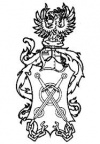 Clan Brujah
Clan Brujah 
The Brujah of London Circa 1900
 Clan Gangrel
Clan Gangrel 
The Gangrel of London Circa 1900
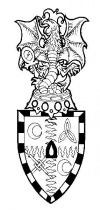 Clan Malkavian
Clan Malkavian 
- Abraham Mellon - Demented Mento
- Dr.Timothy - The Lunatic Primogen of London
- Juliet Parr - The Sheriff of Northern London
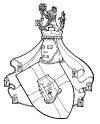 Clan Nosferatu
Clan Nosferatu 
- Harold Tanner - The Nosferatu Primogen & Leper Archivist
- Violet Mary - The Hidden Harpy
- Rathe Haversham - Prince of the Poor
- Richard de Worde - Spy Master living in seclusion
 Clan Toreador
Clan Toreador 
The Toreador of London are not what they used to be, the Sabbat Siege of 1848 destroyed many of the city's Roses, both elders and ancilla perished in the flames of sect warfare. The arrival of Edward Williamson shortly thereafter allowed for the Clan of the Rose to survive and even flourish in London instead of withering away into obscurity. To accomplish this end, Edward used the Ventrue's Treaty of Durham against them and imported a number of ancilla and neonate Toreador as supposed hostages, but whose presence allow the clan to remain firmly planted in London throughout the Victorian Age into the Twentieth Century.
Elders
- Edward Williamson - Toreador elder & Primogen
- Victoria Ash -- Primogen & Performer
Ancilla
- Ophelia Merritt -- Keeper of Elysium (1863)
- Endymion -- Poet of the Night (1863)
- Gore Rayne -- Master of Protocol (1863)
- Jools Tash -- Pickpocket turned Cat Burglar (1863)
- Fionntan Grier -- Glasgow Hostage and Agent Provocateur (1863)
- Artemis Wylde-Whitney -- Esquire, Courtier of London (1863)
Neonates
- Duke - Toreador neonate, childe of Edward
- Horace Holden (''neonate'') - Insightful Poseur, recently made Guardian of Ellysium
- Qadir Al - Asmai -- Neonate of India (1863)
- Lorna Dingwall - The Scottish Hostage
- Henry Stern - Renowned Toreador Sculptor
- Eric Baring-Gould - Toreador Primogen of London {Embraced: 1880}
- Regina Blake - Toreador Neonate {Embraced: 1888}
 Clan Tremere
Clan Tremere 
The Tremere of London were able to get into the city under the leadership of ...... They currently are researching the magic of the city, and trying to not come to the attention of the Ventrue overly much, other than to be helpful to the cause. To that end, they keep their own chantry house in Lambeth Square, while the displaced Tremere hold a rookery in the slums of Whitehouse.
St. James House
- John Dee - Master level Tremere
- Frederick Smythe - - Childe of John Dee
- Nigel Howard - Apprentice of the Seventh Circle, and Resident Astor.
- Emma Blake (1887)
Whitehouse Rookery
- Alric D'Fleur - Warrior of the 7th Circle
- Tania Caboche - Child of Celestine, her eyes in London.
- Luc Ribone - Child of Tania, apprentice.
Ocean Estates
- Edward Bainbridge - Regent, 5th circle scholar
- Rebecca Grey - Solitary Wiccan Practitioner & Herbalist (deceased)
- Sri Sansa - The Indian Guru
- Dr. Alastair Barneby - The Warlock Necromancer
Lone Warlocks
- Anton Wellig --
The Gargoyles of Clan Tremere
- Grimlock - Gargoyle Chantry Guardian, St. James House
- Lockjaw - Gargoyle Chantry Guardian, Whitehouse Rookery
 Clan Ventrue
Clan Ventrue 
- Mithras - God-Prince of London
Coterie of Mithras Children
- Lady Anne Bowesley - Seneschal of London
- Victoria Lancaster - Wary Servant of Mithras
The Deposed
- Valerius- Deposed Would-be Prince
Masters & Forsyth
- Cyril Masters - An ancilla with a tarnished reputation. (Banished to Glasgow by Victoria).
- Peter Forsyth - Fledgling childe of Cyril Masters.
Camarilla Archon and Watchdog for the Ventrue
- Rory McAndrew -- Agent Plenipotentiary of the Camarilla
Primogen of Blue-Bloods
- D'Arielle Cotentin - Guardian of Avalon
The Mancunians
- Janet Latimer - Childe of Baron Shawlands of Manchester, and long-time "Ambassador to London"
- Jeyen Smythe - Childe of Janet Latimer (embraced during her exile in Manchester).
The Knights of St.James
- Geoffrey St. James - "The Cavalier." An elder who has been absent from London society for more than a century.
- Niles St. James - Mortal descendent and childe of Geoffrey. Known as "The Blue-blood."
Ventrue of Other Lines
- Harold Michael Danvers - Pharmaceutical kingpin.
- Eldred Morce -- Chile of Kyle Strathcona, also known as the Canadian Hostage. (1863)
- Frank Allen Simon -- "Who is this Keith?"
 The Other Camarilla
The Other Camarilla 
- Stephen Lenoir - Guide to London's Lost
- Lorna Dingwall - Toreador Ambassador from Edinburgh
- Janet Latimer - Ventrue Ambassador from Manchester
 The Independent Clans of London
The Independent Clans of London 
- Constance Gardenar -- French Daughter of Cacophony that fled Paris after the murder of her Sire.
- Esmail Ahmed -- Orientalist Broker
- Halim Bey - The Merchant from Alexandria (After 1880)
- Shya Martina Randall - Priestess of Set
- Lennie Neville - Priest of Set, runs several disreputable clubs.
- Marissa Jed Ray - Childe of Lennie Neville
- Remus Dunsirn - Giovanni Agent
- Thomas Fountaindike- Giovanni Agent
- Janos Handoval - Giovanni Ghoul
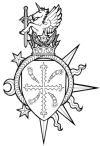 Dhita Choudhair - Ravnos Envoy from New Delhi
Dhita Choudhair - Ravnos Envoy from New Delhi
 Isa Mac Aba - Oneiros Follower of Lilith
Isa Mac Aba - Oneiros Follower of Lilith
100px Artemius Anastasius Tzimisce member of the Tal Meh Roh
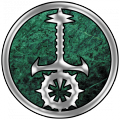 The Sabbat of London
The Sabbat of London 
Visitors to London
Elysium of London
- Army and Navy Club - {Dedicated by Valerius}
- Merritt House - {Dedicated by Valerius}
- National Gallery - {Dedicated by Valerius}
- Palace of Westminster - {Dedicated by Mithras}
- Rules (restaurant) - {Dedicated by Valerius}
Wraiths & The Shadowlands of London
Walkers of the London Hedge
Stories
- Family Matters -- Henry returned to Coalbrookdale (1863)
- Forty Feet Down -- Henry Stern explores the Underground (1864)
- Modern Art Masterpiece -- Henry Stern discovers a murder scene that resembles an infamous painting
- The Matter of the Indian Necklace -- Henry Stern the Toreador vampire and Ostanes the Order of Hermes mage attend the British arm of 1900 Universal Exposition at Kensington Gardens.
- The Quest for the Cintamani Stone -- After surviving an encounter with the Rakshasa the Toreador Henry Stern and Ostanes the Mage discover another Outsider stalking the streets of London.
Errata
Sources
https://www.youtube.com/watch?v=ZUdOXhYwrgU
https://en.wikipedia.org/wiki/Pax_Britannica
https://www.wikiwand.com/en/History_of_London

